
Common Data Set 2022-2023
A0
Respondent Information (Not for Publication)
Name:
Carol Pepin
Title:
Associate Director
Office:
Institutional Research & Planning
Mailing Address:
140 Commonwealth Avenue
City/State/Zip/Country:
Chestnut Hill, MA 02492 US
Phone:
617-552-8487 (direct) 617-552-3111 (main)
Fax:
617-552-8238
E-mail Address:
X
Yes
No
If yes, please provide the URL of the corresponding Web page:
A0A
A1
Address Information
Name of College/University:
Boston College
Mailing Address:
140 Commonwealth Avenue
City/State/Zip/Country:
Chestnut Hill, MA 02492
Street Address (if different):
City/State/Zip/Country:
Main Phone Number:
617-552-8000
WWW Home Page Address:
www.bc.edu
Admissions Phone Number:
617-552-3100
Admissions Toll-Free Phone Number:
Admissions Office Mailing Address:
Boston College Undergraduate Admission
City/State/Zip/Country:
Chestnut Hill, MA 02467
Admissions Fax Number:
617-552-0798
Admissions E-mail Address:
bcapplicant@bc.edu
A2
Public
X
Private (nonprofit)
Proprietary
A3
Classify your undergraduate institution:
X
Coeducational college
Men's college
Women's college
A4
Academic year calendar:
X
Semester
Quarter
Trimester
4-1-4
Continuous
Differs by program (describe):
Other (describe):
A5
Degrees offered by your institution:
X
Certificate
Diploma
A. General Information
Are your responses to the CDS posted for
reference on your institution's Web site?
https://www.bc.edu/content/bc-web/offices/institutional-research-planning/institutional-research.html
We invite you to indicate if there are items on the CDS for which you cannot use the requested analytic
convention, cannot provide data for the cohort requested, whose methodology is unclear, or about which
you have questions or comments in general. This information will not be published but will help the
publishers further refine CDS items.
If there is a separate URL for your school’s online application, please specify:
http://www.commonapp.org/school/boston-college
If you have a mailing address other than the above to which applications should be sent, please provide:
Boston College Undergraduate Admission Processing Center P.O. Box 67485
Source of institutional control (Check only one):
If your academic year has changed because of the
COVID-19 pandemic, please indicate as other
below.
CDS-A Page 1

Common Data Set 2022-2023
Associate
Transfer Associate
Terminal Associate
X
Bachelor's
X
Postbachelor's certificate
X
Master's
X
Post-master's certificate
X
Doctoral degree research/scholarship
X
Doctoral degree – professional practice
X
Doctoral degree -- other
A5
Doctoral degree -- other
A6
Diversity, Equity, and Inclusion
If you have a diversity, equity, and inclusion office or department, please provide the URL of the corresponding Web page:
https://www.bc.edu/content/bc-web/offices/human-resources/ sites/oid.html
CDS-A Page 2
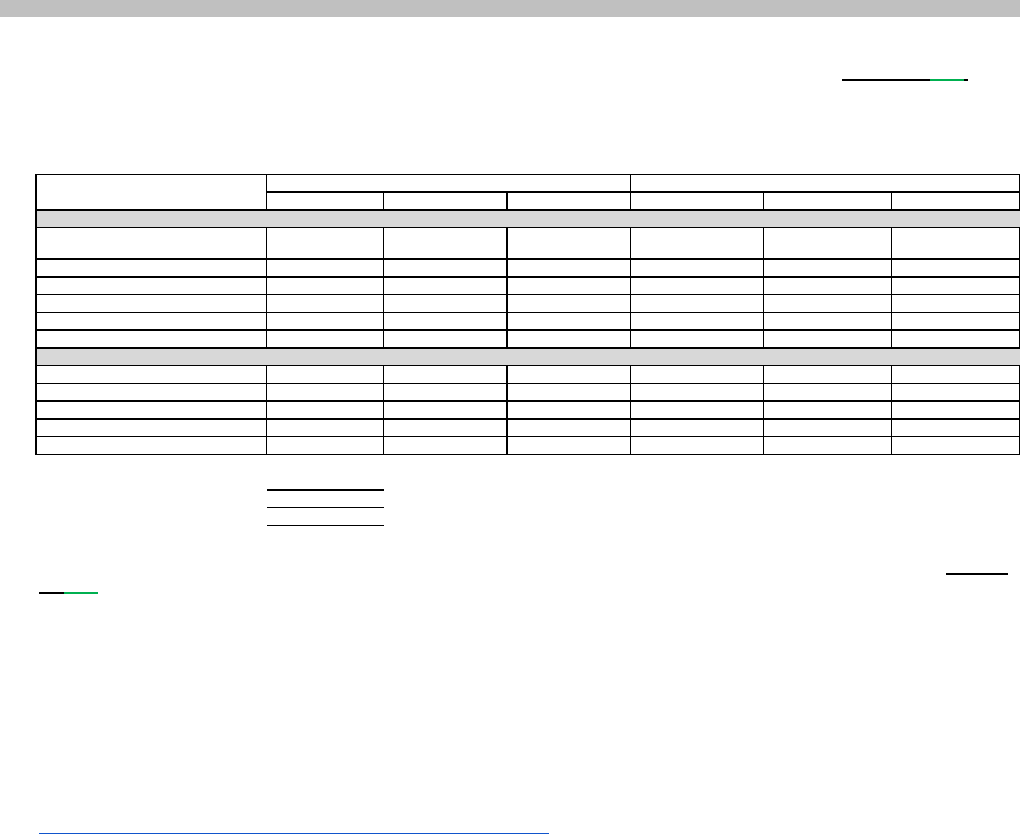
Common Data Set 2022-2023
B1
Men Women Another Gender Men Women Another Gender
Undergraduates
Degree-seeking, first-time, first-
year
1,079 1,256
Other first-year, degree-seeking
61 63
All other degree-seeking
3,295 3,730
Total degree-seeking
4,435 5,049 0 0 0 0
All other undergraduates enrolled
Total undergraduates
4,435 5,049 0 0 0 0
Graduate
Degree-seeking, first-time
456 666
130 183
All other degree-seeking
1,034 1,521 540 602
All other graduates enrolled in
4 3 49 62
Total graduate
1,494 2,190 - 719 847 -
Total all students
5,929 7,239 0 719 847 0
Total all undergraduates 9,484
Total all graduate 5,250
GRAND TOTAL ALL STUDENTS
14,734
B2
B. ENROLLMENT AND PERSISTENCE
Institutional Enrollment - Men and Women
Provide numbers of students for each of the following categories as of the institution's official fall reporting date or as of October 19, 2022.
• Note: Report students formerly designated as “first professional” in the graduate cells.
• New guidance from IPEDS for reporting aggregate data:
Racial/ethnic designations are requested only for United States citizens, residents, and other eligible non-citizens.
Eligible non-citizens include all students who completed high school or a GED equivalency within the United States
(including DACA and undocumented students) and who were not on an F-1 non-immigrant student visa at the time of
high school graduation.
More information about other eligible (for financial aid purposes) non-citizens is available at
https://studentaid.gov/understandaid/eligibility/requirements/non-us-citizens.
• For information on reporting study abroad students please see: This Document at NCES.GOV
• If your institution collects and reports non-binary gender data, please use the "Another Gender" category.
• In cases where gender information is not provided, please distribute across the two-binary categories.
• Complete the “Total Undergraduates” column only if you cannot provide data for the first two columns.
• Report as your institution reports to IPEDS: persons who are Hispanic should be reported only on the
Hispanic line, not under any race, and persons who are non-Hispanic multi-racial should be reported only
under "Two or more races."
PART-TIME
FULL-TIME
Nonresident - A person who is not a citizen or national of the United States and who is in this country on a student visa
or temporary basis and does not have the right to remain indefinitely. Do not include DACA, undocumented, or other
eligible noncitizens in this category.
Enrollment by Racial/Ethnic Category.
Provide numbers of undergraduate students for each of the following categories as of the institution’s official fall reporting date or as of October
19, 2022.
• Include international students only in the category "Nonresidents."
CDS-B Page 3
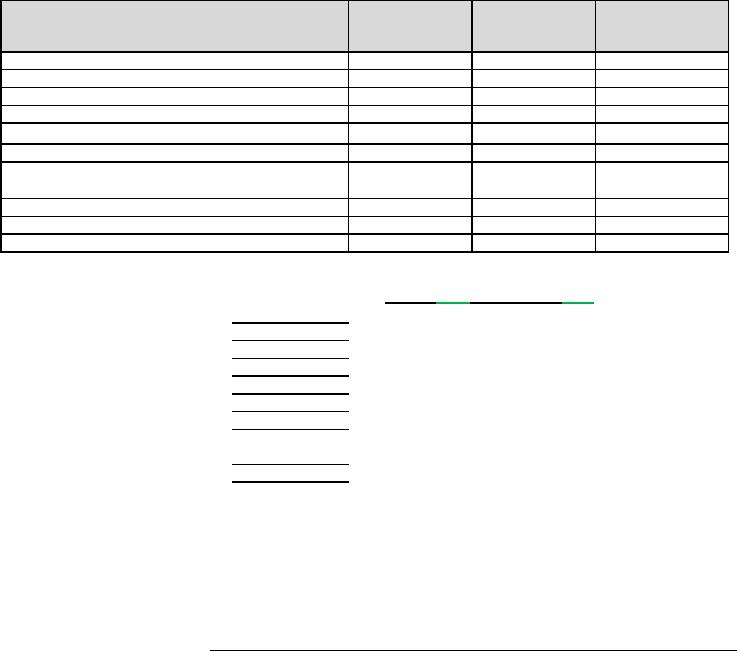
Common Data Set 2022-2023
Degree-Seeking
First-Time
First Year
Degree-Seeking
Undergraduates
(include first-time
first-year)
Total
Undergraduates
(both degree & non-
degree-seeking)
168 686 686
277 1,062 1,062
162 468 468
1,362 5,568 5,568
7 11 11
308 1,100 1,100
4 4 4
2 317 317
45 268 268
2,335 9,484 9,484
Persistence
B3
Number of degrees awarded by your institution from July 1,
2021, to June 30, 2022
Certificate/diploma
Associate degrees
Bachelor's degrees 2344
Postbachelor's certificates
Master's degrees 1563
Post-Master's certificates 3
Doctoral degrees –
164
Doctoral degrees – professional
practice
275
Doctoral degrees – other
Professional practice doctoral degrees include JD and DNP.
B4-B21: Graduation Rates
Race and/or ethnicity unknown
TOTAL
Hispanic/Latino
Black or African American, non-Hispanic
White, non-Hispanic
American Indian or Alaska Native, non-Hispanic
Asian, non-Hispanic
Native Hawaiian or other Pacific Islander, non-Hispa
Two or more races, non-Hispanic
Nonresidents
The items in this section correspond to data elements collected by the IPEDS Web-based Data Collection System’s Graduation Rate Survey
(GRS).
• For complete instructions and definitions of data elements, see the IPEDS GRS Forms and Instructions
for the 2022-2023 Survey. https://nces.ed.gov/ipeds/use-the-data/survey-components/9/graduation-rates
In the following section for bachelor’s or equivalent programs, please disaggregate the Fall 2015 and Fall 2016 cohorts (formerly CDS B4-B11) into four groups:
• Students who received a Federal Pell Grant*
• Recipients of a subsidized Stafford Loan who did not receive a Pell Grant
• Students who did not receive either a Pell Grant or a subsidized Stafford Loan
• Total (all students, regardless of Pell Grant or subsidized loan status)
*Students who received both a Federal Pell Grant and a subsidized Stafford Loan should be reported in the "Recipients of a Federal Pell Grant" column.
For each graduation rate grid below, the numbers in the first three columns for Questions A-G should sum to the cohort total in the fourth column (formerly CDS B4-B11).
Note: All degrees included except Canonical degrees. Bachelor's degrees include Woods College of Advancing Studies.
NOTE - Nonresidents are to be reported separately, in the boxes provided, rather than included in any of the seven
racial/ethnic categories or in race/ethnicity unknown.
CDS-B Page 4
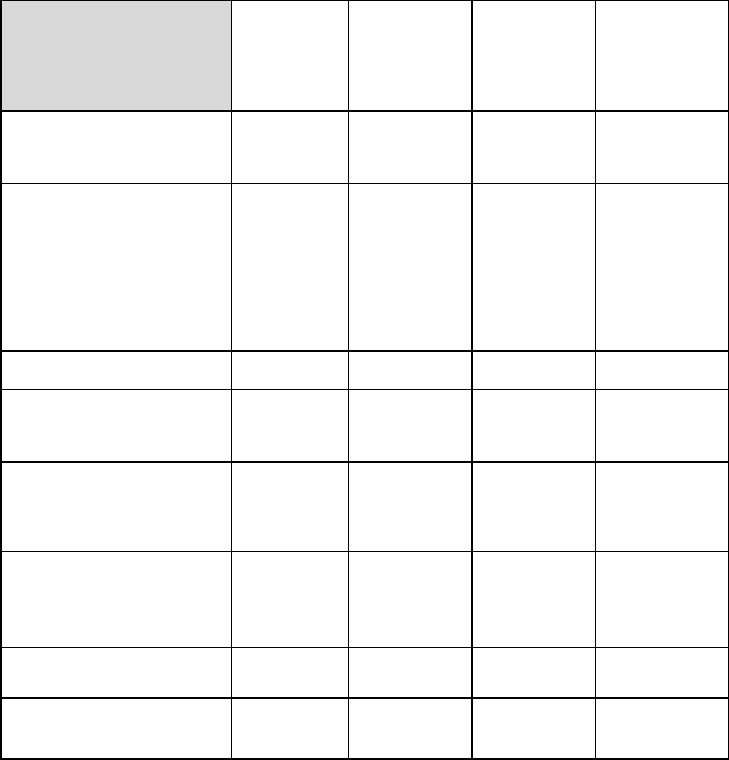
Common Data Set 2022-2023
A
Initial 2016 cohort of first-time, full-
time, bachelor's (or equivalent)
degree-seeking undergraduate
students
298 497 1523 2318
B
Of the initial 2016 cohort, how many
did not persist and did not graduate
for the following reasons:
• Deceased
• Permanently Disabled
• Armed Forces
• Foreign Aid Service of the Federal
Government
• Official church missions
• Report Total Allowable Exclusions
0 0 6 6
C
Final 2016 cohort, after adjusting for
allowable exclusions
298 497 1517 2312
D
Of the initial 2015 cohort, how many
completed the program in four years
or less (by Aug. 31, 2020)
247 441 1340 2028
E
Of the initial 2016 cohort, how many
completed the program in more than
four years but in five years or less
(after Aug. 31, 2020 and by Aug. 31,
2021)
11 13 47 71
F
Of the initial 2016 cohort, how many
completed the program in more than
five years but in six years or less
(after Aug. 31, 2021 and by Aug. 31,
2022)
0 1 2 3
G
Total graduating within six years
(sum of lines D, E, and F)
258 455 1389 2102
H
Six-year graduation rate for 2016
cohort (G divided by C)
87% 92% 92% 91%
Recipients of a
Federal Pell
Grant
Students who did
not receive either
a Pell Grant or a
subsidized
Stafford Loan
Total
(sum of 3 columns to
the left)
Fall 2015 Cohort
Recipients of a
Subsidized
Stafford Loan who
did not receive a
Pell Grant
Fall 2016 Cohort
For Bachelor’s or Equivalent Programs
Please provide data for the Fall 2016 cohort if available. If Fall 2016 cohort data are not available, provide data for the Fall
2015 cohort.
CDS-B Page 5
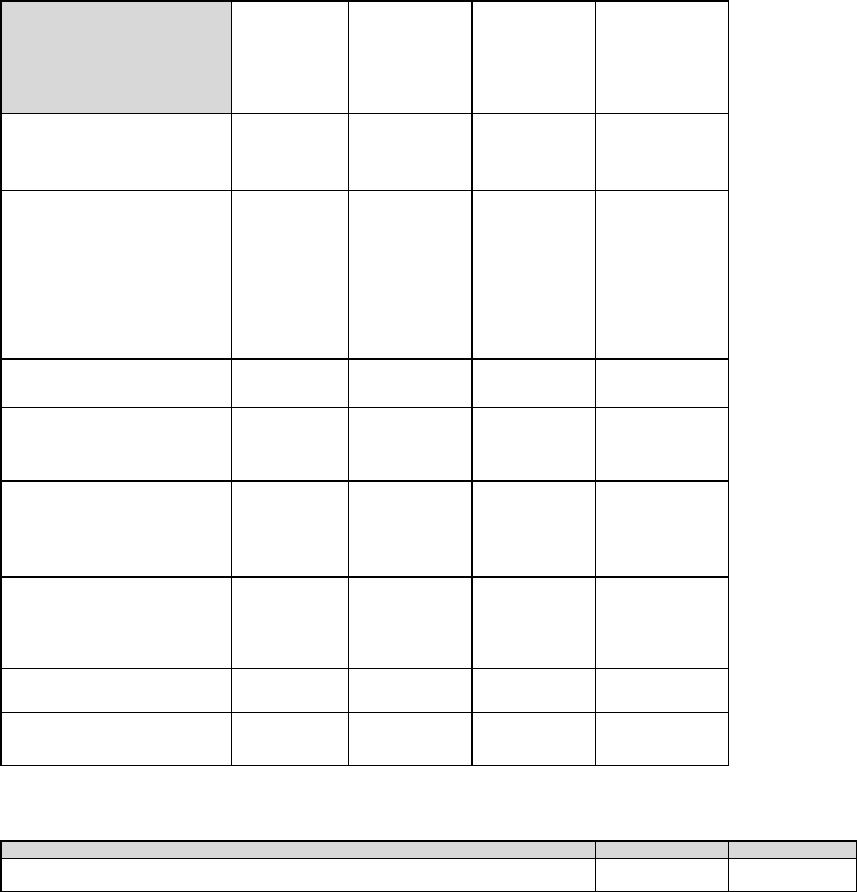
Common Data Set 2022-2023
A
Initial 2015 cohort of first-time, full-
time, bachelor's (or equivalent)
degree-seeking undergraduate
students
276 499 1535
2310
B
Of the initial 2015 cohort, how many
did not persist and did not graduate
for the following reasons:
• Deceased
• Permanently Disabled
• Armed Forces
• Foreign Aid Service of the Federal
Government
• Official church missions
• Report Total Allowable Exclusions
0 3 7
10
C
Final 2015 cohort, after adjusting for
allowable exclusions
276 496 1528 2300
D
Of the initial 2015 cohort, how many
completed the program in four years
or less (by Aug. 31, 2019)
213 444 1362
2019
E
Of the initial 2015 cohort, how many
completed the program in more than
four years but in five years or less
(after Aug. 31, 2019 and by Aug. 31,
2020)
20 12 31
63
F
Of the initial 2015 cohort, how many
completed the program in more than
five years but in six years or less
(after Aug. 31, 2020 and by Aug. 31,
2021)
1 1 4
6
G
Total graduating within six years
(sum of lines D, E, and F)
234 457 1397 2088
H
Six-year graduation rate for 2015
cohort (G divided by C)
85% 92% 91% 91%
For Two-Year Institutions
2019 Cohort 2018 Cohort
B12
Please provide data for the 2019 cohort if available. If 2019 cohort data are not available, provide data for the 2018 cohort.
Total
(sum of 3 columns to
the left)
Recipients of a
Subsidized
Stafford Loan who
did not receive a
Pell Grant
Students who did
not receive either
a Pell Grant or a
subsidized
Stafford Loan
Recipients of a
Federal Pell
Grant
Initial cohort, total of first-time, full-time degree/certificate-seeking students:
CDS-B Page 6
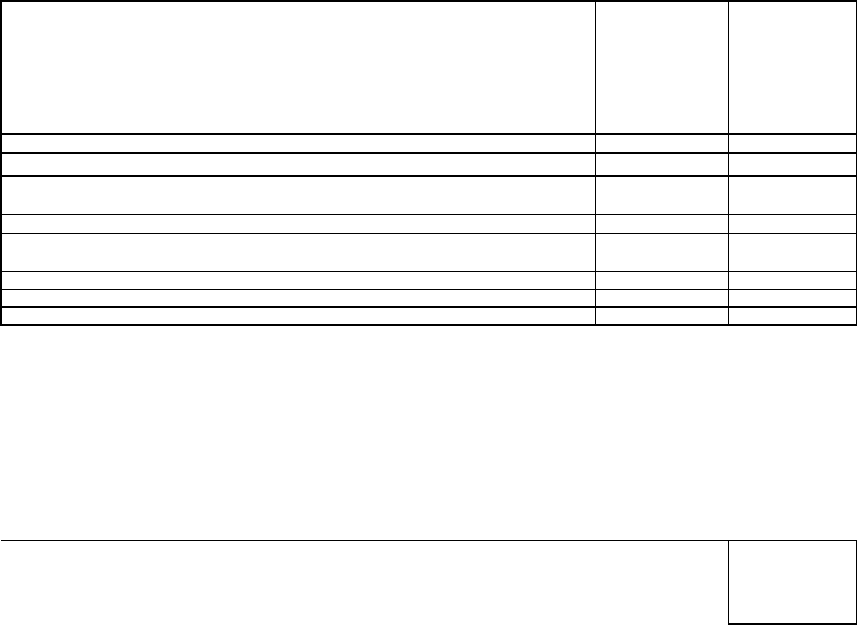
Common Data Set 2022-2023
B13
B14
0 0
B15
B16
B17
B18
B19
B20
B21
B22. Retention Rates
B22
95%
Of the initial cohort, how many did not persist and did not graduate for the following reasons:
• Death
• Permanently Disability
• Service in the armed forces,
• Foreign aid service of the federal government
• Official church missions
• Report total allowable exclusions
Final cohort, after adjusting for allowable exclusions:
Completers of programs of less than two years duration (total):
Total transfers-out (within three years) to other institutions:
Total transfers to two-year institutions:
Completers of programs of less than two years within 150 percent of normal time:
Completers of programs of at least two but less than four years (total):
Completers of programs of at least two but less than four-years within 150 percent of normal time:
Total transfers to four-year institutions:
Report for the cohort of all full-time, first-time bachelor’s (or equivalent) degree-seeking undergraduate students who entered in Fall 2021 (or the
preceding summer term).
• The initial cohort may be adjusted for students who departed for the following reasons:
For the cohort of all full-time bachelor’s (or equivalent) degree-seeking undergraduate students who
entered your institution as first-year students in Fall 2021 (or the preceding summer term), what percentage
was enrolled at your institution as of the date your institution calculates its official enrollment in Fall 2022.
* Death
* Permanent Disability
* Service in the armed forces
* Foreign aid service of the federal government
* Official church missions
* No other adjustments to the initial cohort should be made.
CDS-B Page 7
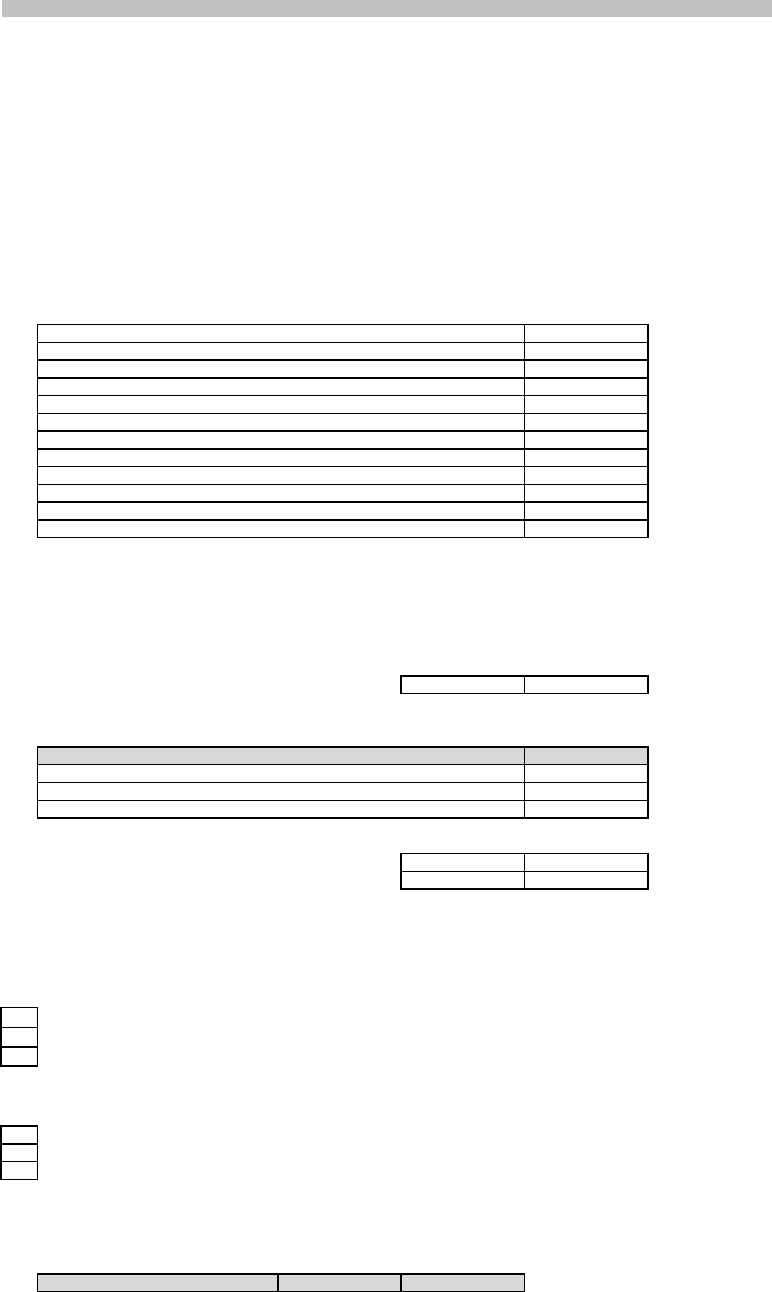
Common Data Set 2022-2023
C1-C2: Applications
15887
24459
2964
3765
1079
1253
40,494
6,748
2,335
C2
Yes No
X
TOTAL
7660
4674
55
Is your waiting list ranked?
Yes No
X
C3-C5: Admission Requirements
C3
High school completion requirement
X
C4
X
C5
Units
Units
If yes, do you release that information to students?
Do you release that information to school counselors?
Total part-time, first-time, first-year men who enrolled
Total full-time, first-time, first-year women who enrolled
Total part-time, first-time, first-year women who enrolled
First-time, first-year wait-listed students
If yes, please answer the questions below for Fall 2022 admissions:
WAITING LIST
Number of qualified applicants offered a place on waiting list:
Number accepting a place on the waiting list:
Number of wait-listed students admitted:
Total first-time, first-year who applied
Total first-time, first-year who were admitted
Total full-time, first-time, first-year who enrolled
Students who met admission requirements but whose final admission was contingent on space availability
Do you have a policy of placing students on a waiting list?
Check the appropriate box to identify your high school completion requirement for degree-seeking entering
students:
High school diploma is required and GED is accepted
High school diploma is required and GED is not accepted
High school diploma or equivalent is not required
Does your institution require or recommend a general college-preparatory program for degree-
seeking students?
Require
Recommend
Neither require nor recommend
Distribution of high school units required and/or recommended. Specify the distribution of academic
high school course units required and/or recommended of all or most degree-seeking students using
Carnegie units (one unit equals one year of study or its equivalent). If you use a different system for
calculating units, please convert.
Total first-time, first-year men who were admitted
Total first-time, first-year women who were admitted
Total full-time, first-time, first-year men who enrolled
C. FIRST-TIME, FIRST-YEAR ADMISSION
• Since the total may include students who did not provide gender data, the detail need not sum to
the total.
• If your institution collects and reports non-binary gender data, please use the "Another Gender"
category.
• Note that recent high school graduates and other students without prior postsecondary experience will
still be considered "first-time students" for fall enrollment reporting purposes even if they enrolled in the
summer prior to fall enrollment.
C1
First-time, first-year students: Provide the number of degree-seeking, first-time, first-year students who
applied, were admitted, and enrolled (full- or part-time) in Fall 2022.
• Include early decision, early action, and students who began studies during summer in this cohort.
• Applicants should include only those students who fulfilled the requirements for consideration for
admission (i.e., who completed actionable applications) and who have been notified of one of the
following actions: admission, non-admission, placement on waiting list, or application withdrawn (by
applicant or institution).
Total first-time, first-year women who applied
Total first-time, first-year men who applied
CDS-C Page 13
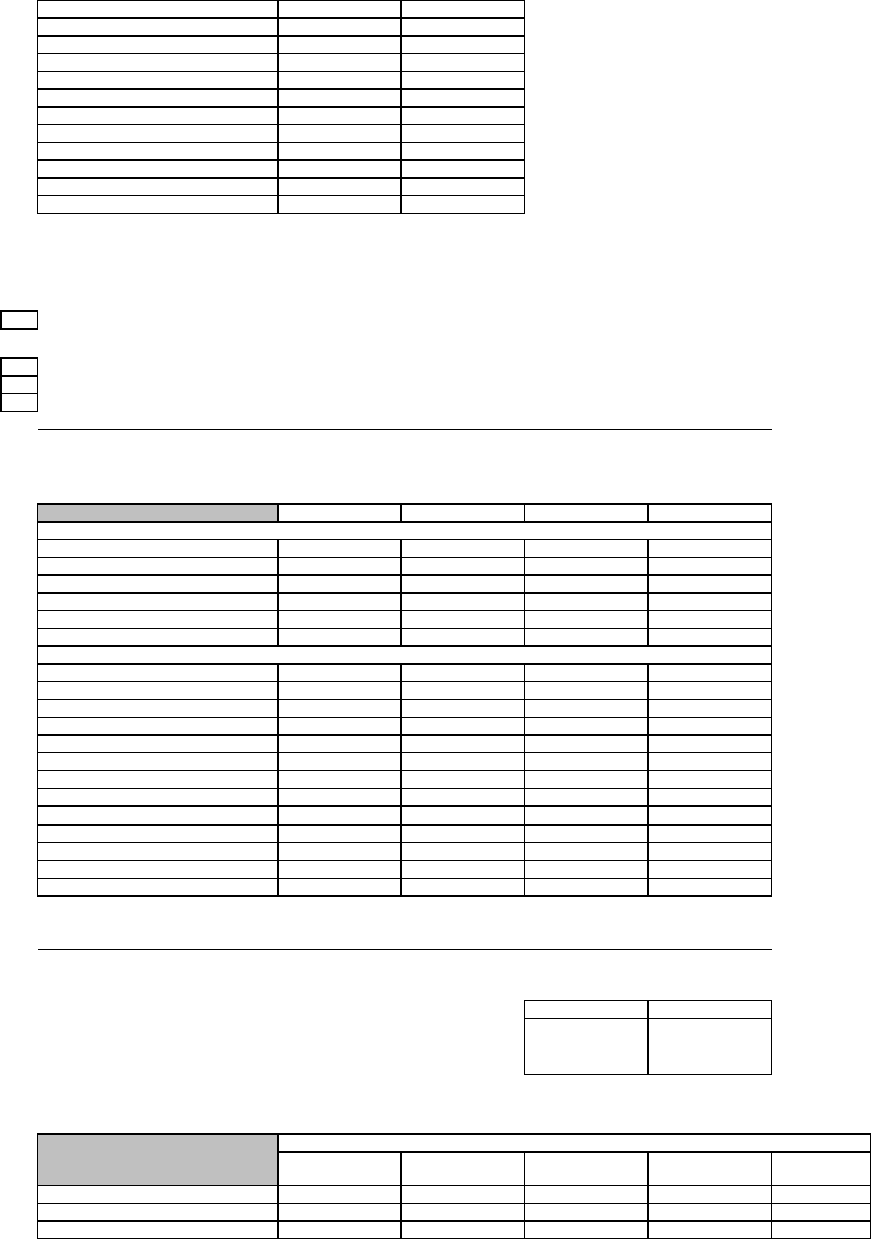
Common Data Set 2022-2023
Total academic units
20
English
4
Mathematics 4
Science 4
Of these, units that must be
4
Foreign language 4
Social studies 4
History 4
Academic electives
Computer Science
Visual/Performing Arts
Other (specify)
C6-C7: Basis for Selection
C6
other (explain):
C7
Very Important Important Considered Not Considered
Academic
Rigor of secondary school record
X
Class rank X
Academic GPA
X
Standardized test scores X
Application Essay X
Recommendation(s) X
Nonacademic
Interview
Extracurricular activities X
Talent/ability X
Character/personal qualities X
First generation X
Alumni/ae relation
Geographical residence X
State residency X
Religious affiliation/commitment X
Racial/ethnic status X
Volunteer work X
Work experience X
Level of applicant’s interest X
Please provide additional information if the importance of any specific academic or nonacademic factors differ by ac
C8: SAT and ACT Policies
Entrance exams
Yes No
X
C8A
Require Recommend Require for Some
Consider if
Submitted
Not
Considered
SAT or ACT
X
ACT Only
SAT Only
C8B
ADMISSION
Has been removed from the CDS.
If yes, place check marks in the appropriate boxes below to reflect your institution’s policies for use in admission for Fall
2023.
Do you have an open admission policy, under which virtually all secondary school graduates or students
with GED equivalency diplomas are admitted without regard to academic record, test scores, or other
qualifications? If so, check which applies:
Relative importance of each of the following academic and nonacademic factors in your first-time,
first-year, degree-seeking general (not including programs with specific criteria) admissions
decisions.
Open admission policy as described above for all students
Open admission policy as described above for most students, but--
selective admission for out-of-state students
selective admission to some programs
Does your institution make use of SAT, ACT, or SAT Subject Test
scores in admission decisions for first-time, first-year, degree-seeking
applicants?
CDS-C Page 14
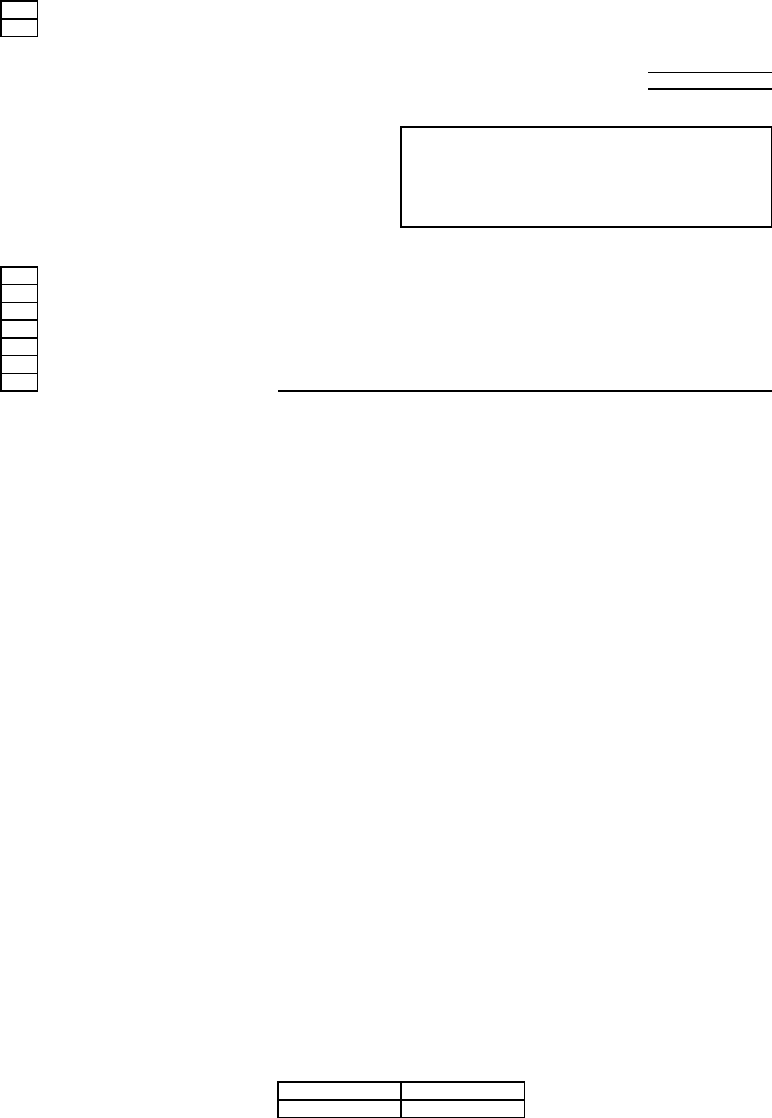
Common Data Set 2022-2023
C8C
C8D
X
Yes
No
C8E
1/3
1/3
C8F
C8G
SAT
X
SAT Subject Tests
X
AP
CLEP
Institutional Exam
State Exam (specify):
C9-C12: First-time, first-year Profile
C9
Percent
Number
Submitting SAT Scores
34% 800
Submitting ACT Scores
18% 415
Has been removed from the CDS.
• If you average the scores, use the average to report the scores.
In addition, does your institution use applicants' test scores for academic advising?
For each assessment listed below, report the score that represents the 25th percentile (the score that 25 percent of
the first-time, first-year population scored at or below) and the 75th percentile score (the score that 25 percent
scored at or above).
Percent and number of first-time, first-year students enrolled in Fall 2022 who submitted national
standardized (SAT/ACT) test scores.
• Include information for ALL enrolled, degree-seeking, first-time, first-year students who submitted
test scores.
• Do not include partial test scores (e.g., mathematics scores but not critical reading for a category of
students) or combine other standardized test results (such as TOEFL) in this item.
• Do not convert SAT scores to ACT scores and vice versa.
• If a student submitted multiple sets of scores for a single test, report this information according to how
you use the data. For example:
• If you consider the highest scores from either submission, use the highest combination of scores
(e.g., verbal from one submission, math from the other).
Latest date by which SAT or ACT scores must be received for fall-term admission
Latest date by which SAT Subject Test scores must be received for fall-term admission
If necessary, use this space to clarify your test
policies (e.g., if tests are recommended for some
students, or if tests are not required of some
students due to differences by academic program,
student academic background, or if other
examinations may be considered in lieu of the SAT
Please indicate which tests your institution uses for placement (e.g., state tests):
ACT
Provide information for ALL enrolled, degree-seeking, full-time and part-time, first-time, first-year
students enrolled in Fall 2022, including students who began studies during summer, international
students/nonresidents, and students admitted under special arrangements.
CDS-C Page 15
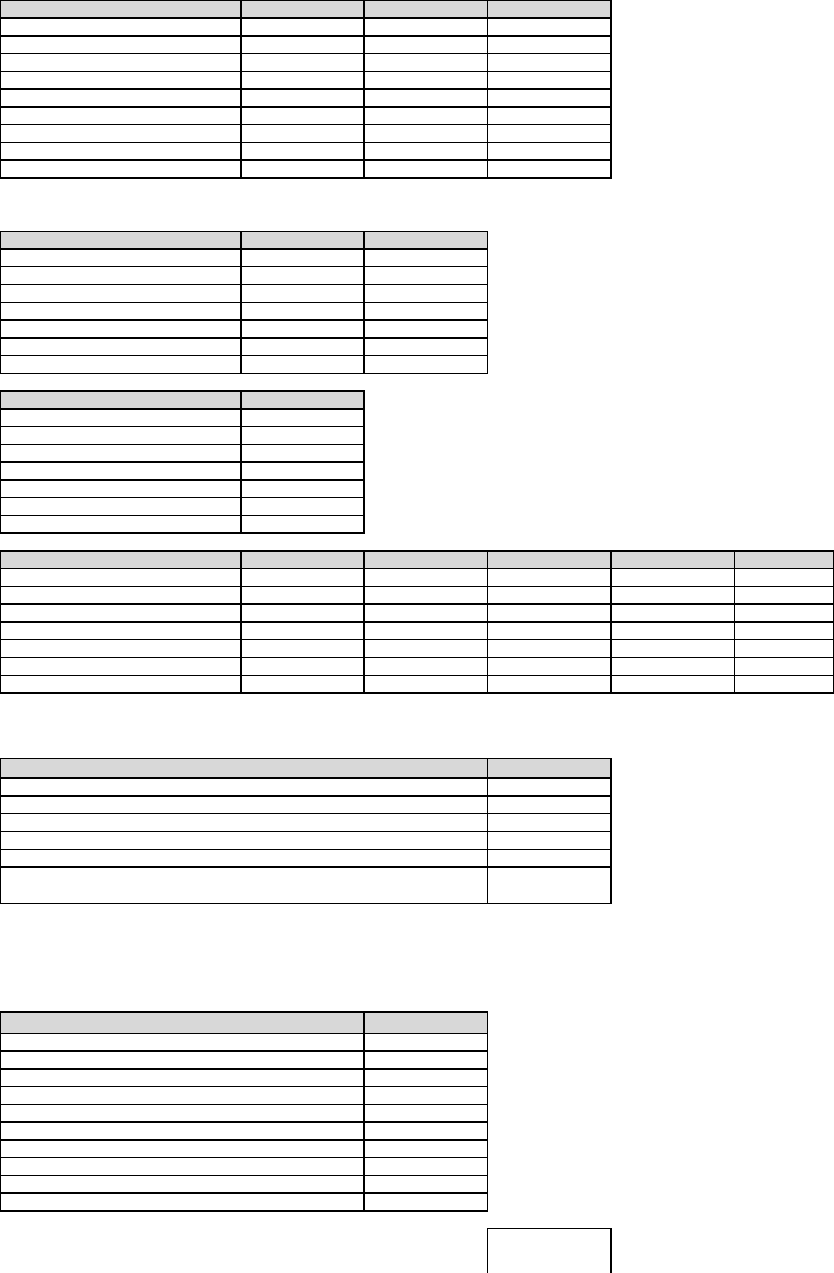
Common Data Set 2022-2023
Assessment
25th Percentile 50th Percentile 75th Percentile
SAT Composite
1450 1490 1520
SAT Evidence-Based Reading and
705 730 760
SAT Math
730 760 780
ACT Composite
33 34 35
ACT Math
30 32 34
ACT English
34 35 35
ACT Writing
ACT Science
31 33 35
ACT Reading
33
35 36
Score Range
SAT Evidence-
SAT Math
700-800 80.88% 90.50%
600-699 18.37% 9.00%
500-599 0.75% 0.50%
400-499
300-399
200-299
Totals should = 100% 100.00% 100.00%
Score Range
SAT Composite
1400-1600
92.38%
1200-1399
7.12%
1000-1199
0.50%
800-999
600-799
400-599
Totals should = 100%
100.00%
Score Range ACT Composite ACT English ACT Math ACT Reading ACT Science
30-36 97.35% 96.87% 82.41% 95.66% 90.12%
24-29 2.41% 2.89% 16.87% 4.10% 8.92%
18-23 0.48% 0.96%
12-17 0.24% 0.24%
0.24% 0.24%
6-11
Below 6
Totals should = 100% 100.00% 100.00% 100.00% 100.00% 100.00%
C10
Percent
90%
98%
99% Top half +
1% bottom half = 100%
0%
30%
C11
Percent
C12
Percent who had GPA of 4.0
Percent of first-time, first-year students with scores in each range:
Percent of all degree-seeking, first-time, first-year students who had high school class rank within
each of the following ranges (report information for those students from whom you collected high
school rank information)
Assessment
Percent in top tenth of high school graduating class
Percent in top quarter of high school graduating class
Percent who had GPA between 3.75 and 3.99
Percent who had GPA between 3.50 and 3.74
Percent in top half of high school graduating class
Percent in bottom half of high school graduating class
Percent in bottom quarter of high school graduating class
Percent of total first-time, first-year students who submitted high school
class rank:
Percentage of all enrolled, degree-seeking, first-time, first-year students who had high school grade-
point averages within each of the following ranges (using 4.0 scale). Report information only for
those students from whom you collected high school GPA.
Score Range
Average high school GPA of all degree-seeking, first-time, first-year
students who submitted GPA:
Percent who had GPA between 3.25 and 3.49
Percent who had GPA between 3.00 and 3.24
Percent who had GPA between 2.50 and 2.99
Percent who had GPA between 2.0 and 2.49
Percent who had GPA between 1.0 and 1.99
Percent who had GPA below 1.0
Totals should = 100%
CDS-C Page 16
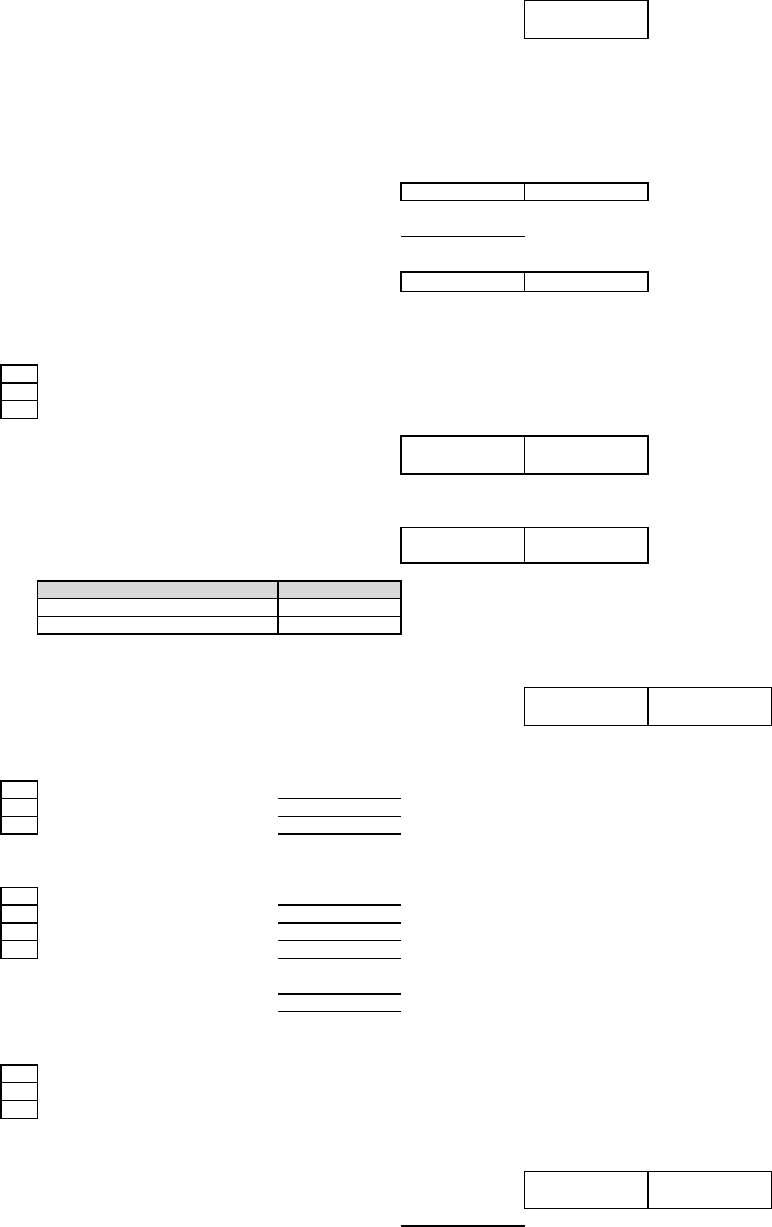
Common Data Set 2022-2023
C13-C20: Admission Policies
C13
Application Fee
Yes No
X
$80
Yes No
X
X
Same fee
Free
Reduced
Yes No
X
C14
Application closing date
Yes No
X
Date
Application closing date (fall)
1/3
Priority Date
Yes No
C15
X
C16
Notification to applicants of admission decision sent (fill in one only)
On a rolling basis beginning
X
By (date): 4/1
Other:
C17
Reply policy for admitted applicants (fill in one only)
X
Must reply by (date):
5/1
No set date
Must reply by May 1st or within weeks if notified thereafter
Other:
Deadline for housing deposit (MMD
5/1
Amount of housing deposit: $500
Refundable if student does not enroll?
Yes, in full
Yes, in part
X
No
C18
Deferred admission
Yes No
X
1 year (2 years for required military service)
C19
Early admission of high school students
Yes No
Percent of total first-time, first-year students who submitted high school
GPA:
Are first-time, first-year students accepted for terms other than the
fall?
If your institution has waived its application fee for the Fall 2022 admission cycle please select no.
Does your institution have an application fee?
Amount of application fee:
Can it be waived for applicants with financial need?
If you have an application fee and an on-line application option, please indicate policy for students
who apply on-line:
Can on-line application fee be waived for
applicants with financial need?
Does your institution have an application closing
date?
Does your institution allow students to postpone enrollment after
admission?
If yes, maximum period of postponement:
CDS-C Page 17
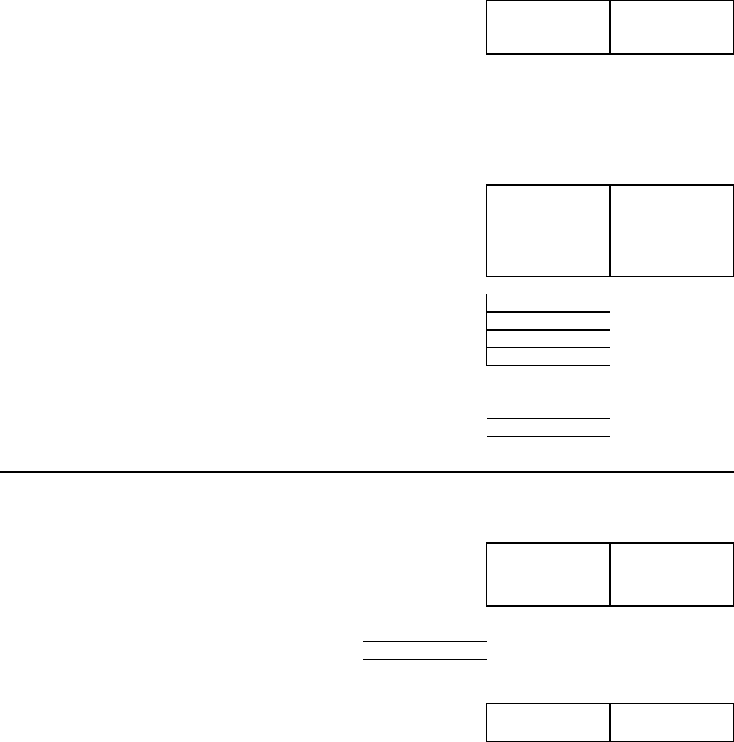
Common Data Set 2022-2023
X
C20
Common Application: Question removed from CDS. (Initiated during 2006-2007 cycle)
C21-C22: Early Decision and Early Action Plans
C21
Early Decision
Yes No
X
11/1
by 12/15
1/3
by 2/15
4428
1246
C22
Early action
Yes No
Yes No
Is your early action plan a “restrictive” plan under which you limit
students from applying to other early plans?
Does your institution allow high school students to enroll as full-time,
first-time, first-year students one year or more before high school
graduation?
Does your institution offer an early decision plan (an admission plan
that permits students to apply and be notified of an admission decision
well in advance of the regular notification date and that asks students
to commit to attending if accepted) for first-time, first-year applicants for
fall enrollment?
Number of applicants admitted under early decision plan
Please provide significant details about your early decision plan:
If “yes,” please complete the following:
First or only early decision plan closing date
First or only early decision plan notification date
Other early decision plan closing date
Other early decision plan notification date
For the Fall 2022 entering class:
Number of early decision applications received by your institution
Do you have a nonbinding early action plan whereby students are
notified of an admission decision well in advance of the regular
notification date but do not have to commit to attending your college?
If “yes,” please complete the following:
Early action closing date
Early action notification date
CDS-C Page 18
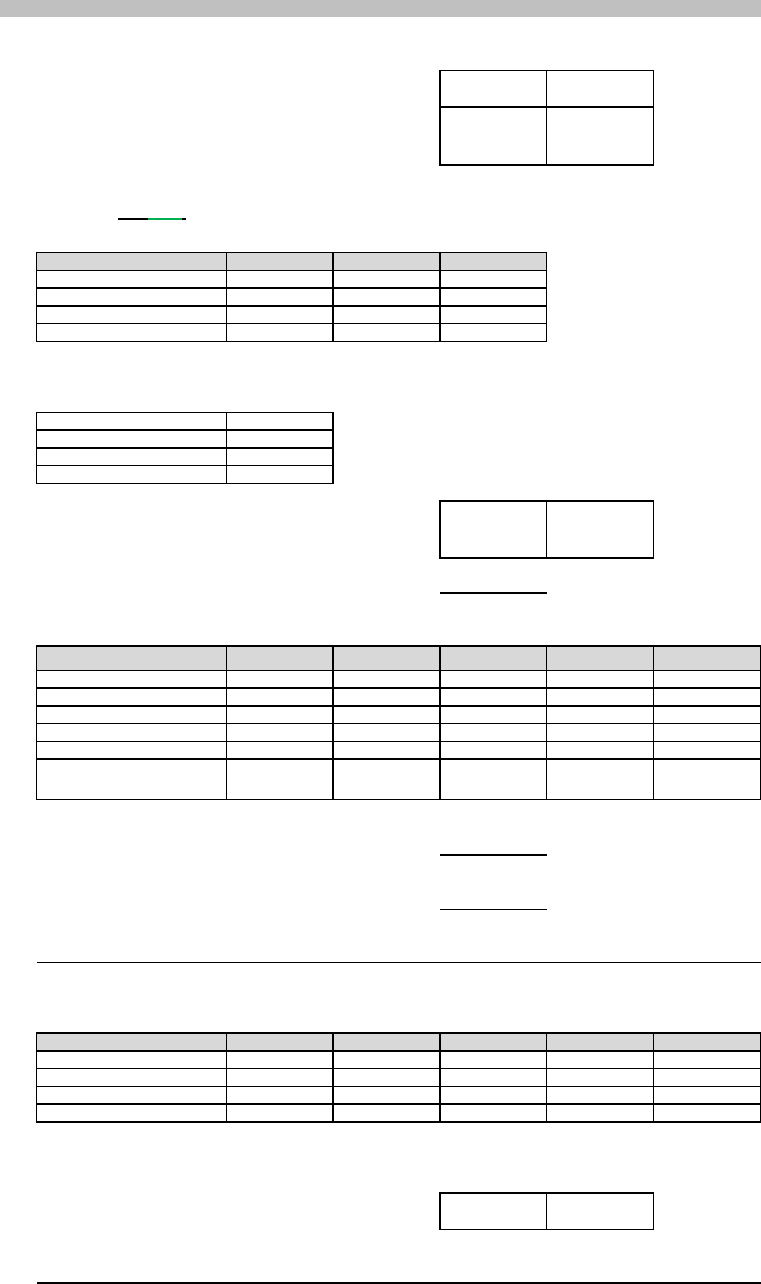
Common Data Set 2022-2023
D1-D2: Fall Applicants
Yes No
D1
X
D2
Applicants
Admitted
Enrolled
Men 1,136 163 61
Women 1,269 176 63
Another Gender
Total 2,405 339 124
D3-D11: Application for Admission
D3
Fall X
Winter
Spring X
Summer
Yes No
D4
X
9
D5
Required of All
Recommended
of All
Recommended
of Some
Required of Some Not Required
High school transcript
X
College transcript(s)
X
Essay or personal
X
Interview
X
Standardized test scores
X
Statement of good
standing from prior
X
D6
D7
3
D8
D9
D9
Priority Date Closing Date Notification Date Reply Date
Rolling
Admission
D9
Fall
3/15 by 5/20
D9
Winter
D9
Spring
11/1 by 12/15
D9
Summer
Yes No
D10
D11
D. TRANSFER ADMISSION
Does your institution enroll transfer students? (If no, please
skip to Section E)
If yes, may transfer students earn advanced standing
credit by transferring credits earned from course work
completed at other colleges/universities?
Provide the number of students who applied, were admitted, and enrolled as degree-seeking transfer
students in Fall
2022
.
Indicate terms for which transfers may enroll:
If your institution collects and reports non-binary gender data, please use the "Another Gender" category.
Must a transfer applicant have a minimum number of
credits completed or else must apply as an entering first-
year student?
If yes, what is the minimum number of credits and the unit
of measure?
Indicate all items required of transfer students to apply for admission:
If a minimum high school grade point average is required
of transfer applicants, specify (on a 4.0 scale):
List any other application requirements specific to transfer applicants:
List application priority, closing, notification, and candidate reply dates for transfer students. If applications
are reviewed on a continuous or rolling basis, place a check mark in the “Rolling admission” column.
If a minimum college grade point average is required of
transfer applicants, specify (on a 4.0 scale):
Does an open admission policy, if reported, apply to
transfer students?
Describe additional requirements for transfer admission, if applicable:
CDS-D Page 19
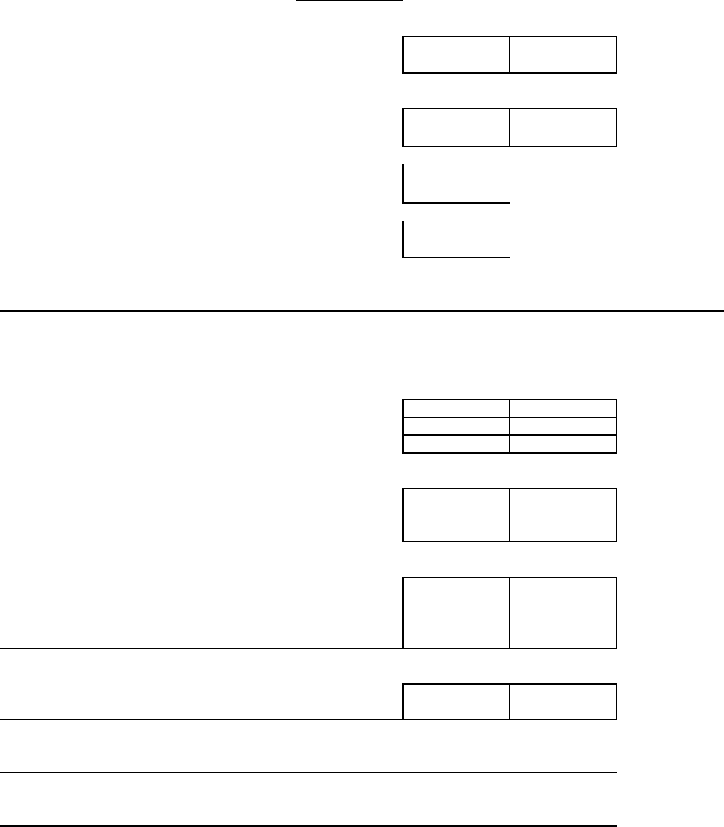
Common Data Set 2022-2023
D12
C
Number Unit Type
D13
Number Unit Type
D14
60 credits
D15
D16
60.00
credits
D17
D18-D22: Military Service Transfer Credit Policies
D18
Does your institution accept the following military/veteran transfer credits:
Yes
No
Number
Unit Type
D19
Number
Unit Type
D20
Yes
No
D21
D22
D12-D17: Transfer Credit Policies
Report the lowest grade earned for any
course that may be transferred for credit:
Maximum number of credits or courses that may be
transferred from a two-year institution:
Maximum number of credits or courses that may be
transferred from a four-year institution:
Minimum number of credits that transfers must complete at
your institution to earn an associate degree:
Describe other transfer credit policies:
Minimum number of credits that transfers must complete at
your institution to earn a bachelor’s degree:
American Council on Education (ACE)
College Level Examination Program (CLEP)
DANTES Subject Standardized Tests (DSST)
Maximum number of credits or courses that may be
transferred based on military education evaluated by the
American Council on Education (ACE):
Are the military/veteran credit transfer policies published on your
website?
If yes, please provide the URL where the policy can be located:
Describe other military/veteran transfer credit policies unique to your institution:
Maximum number of credits or courses that may be transferred
based on Department of Defense supported prior learning
assessments (College Level Examination Program (CLEP) or
DANTES Subject Standardized Tests (DSST)):
CDS-D Page 20
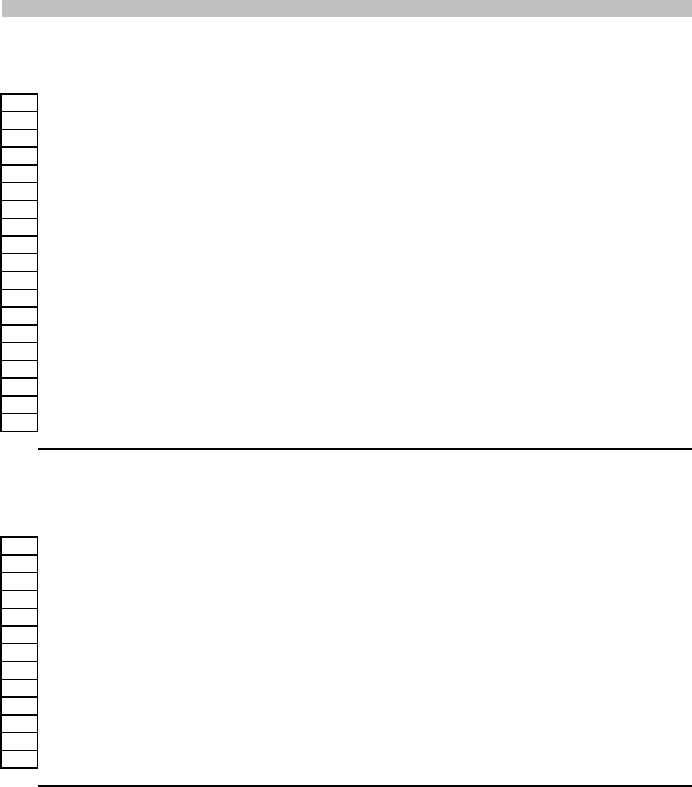
Common Data Set 2022-2023
E1
X
Accelerated program
Comprehensive transition and postsecondary program for students with intellectual disabilities
X
Cross-registration
X
Distance learning
X
Double major
Dual enrollment
English as a Second Language (ESL)
X
Exchange student program (domestic)
External degree program
Honors Program
X
Independent study
X
Internships
X
Liberal arts/career combination
X
Student-designed major
X
Study abroad
X
Teacher certification program
X
Undergraduate Research
Weekend college
Other (specify):
E2
Has been removed from the CDS.
E3
Areas in which all or most students are required to complete some course
work prior to graduation:
X
Arts/fine arts
Computer literacy
X
English (including composition)
Foreign languages
X
History
Physical Education
X
Humanities
Intensive writing
X
Mathematics
X
Philosophy
X
Sciences (biological or physical)
X
Social science
X
Other (describe):
E. ACADEMIC OFFERINGS AND POLICIES
Special study options: Identify those programs available at your institution. Refer to the
glossary for definitions.
Theology, demonstrated proficiency in a foreign language, Cultural Diversity
CDS-E Page 21
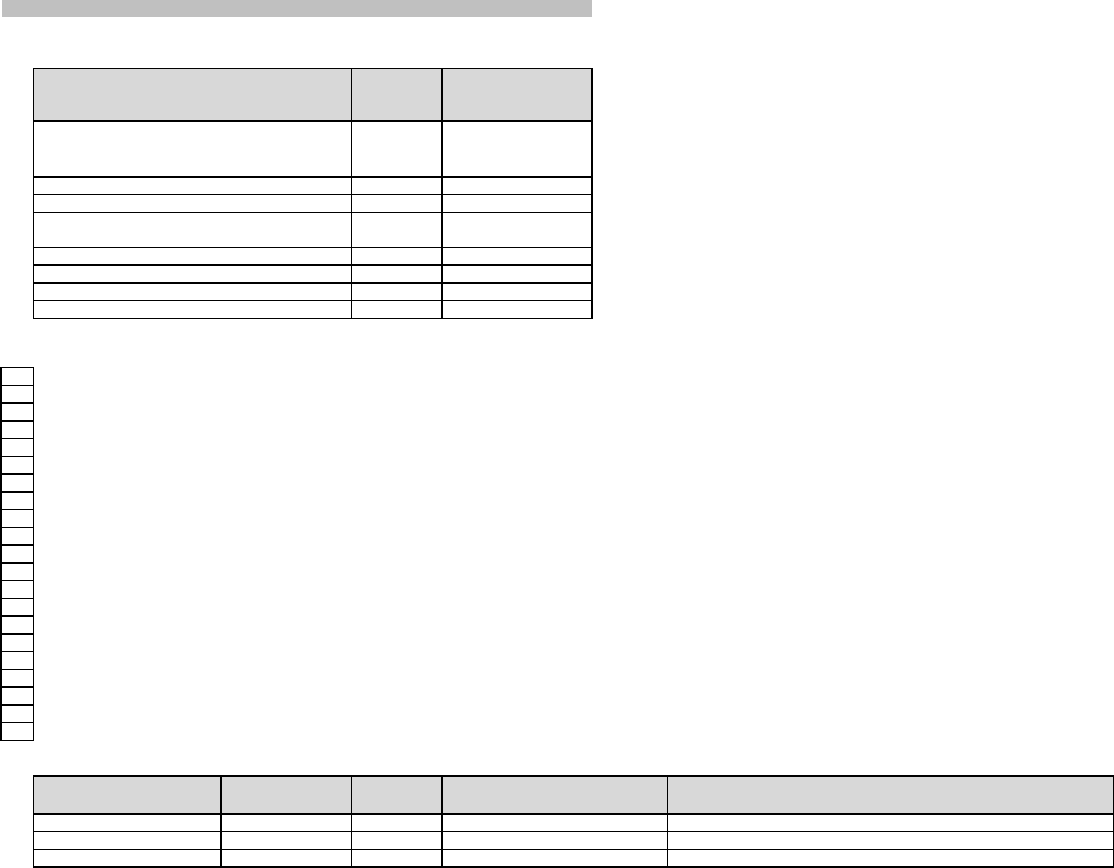
Common Data Set 2022-2023
F1
First-time,
first-year
students
Undergraduates
77% 75%
N/A N/A
N/A N/A
99% 81%
<1% 19%
0% <1%
18 20
18 20
F2
X
Campus Ministries
X
Choral groups
X
Concert band
X
Dance
X
Drama/theater
X
X
Jazz band
X
Literary magazine
X
Marching band
X
Model UN
X
Music ensembles
X
Musical theater
X
Opera
X
Pep band
X
Radio station
X
Student government
X
Student newspaper
X
Student-run film society
X
Symphony orchestra
X
Television station
X
Yearbook
F3
On Campus
Army ROTC is offered:
Naval ROTC is offered:
Air Force ROTC is offered:
F4
F. STUDENT LIFE
Percentages of first-time, first-year degree-seeking students and degree-
seeking undergraduates enrolled in Fall 2022 who fit the following
Percent who live off campus or commute
Percent of students age 25 and older
Average age of full-time students
Percent who are from out of state (exclude
international/nonresidents from the numerator
and denominator)
Percent of men who join fraternities
Percent of women who join sororities
Percent who live in college-owned, -operated,
or -affiliated housing
Average age of all students (full- and part-
International Student Organization
Activities offered. Identify those programs available at your institution.
ROTC (program offered in cooperation with Reserve Officers' Training Corps)
Housing: Check all types of college-owned, -operated, or -affiliated housing
available for undergraduates at your institution.
Name of Cooperating Institution
Northeastern University
Boston Consortium based out of Boston Univ
Boston University
Marine Option
(for Naval ROTC)
X
X
X
X
At Cooperating Institution
CDS-F Page 22

Common Data Set 2022-2023
X
Coed dorms
Men's dorms
X
Women's dorms
X
Fraternity/sorority housing
Cooperative housing
X
Theme housing
X
Wellness housing
X
Living Learning
X
Other housing options
Male Recovery House
(substance free living
Apartments for married students
Apartments for single students
Special housing for disabled
Special housing for international students
CDS-F Page 23
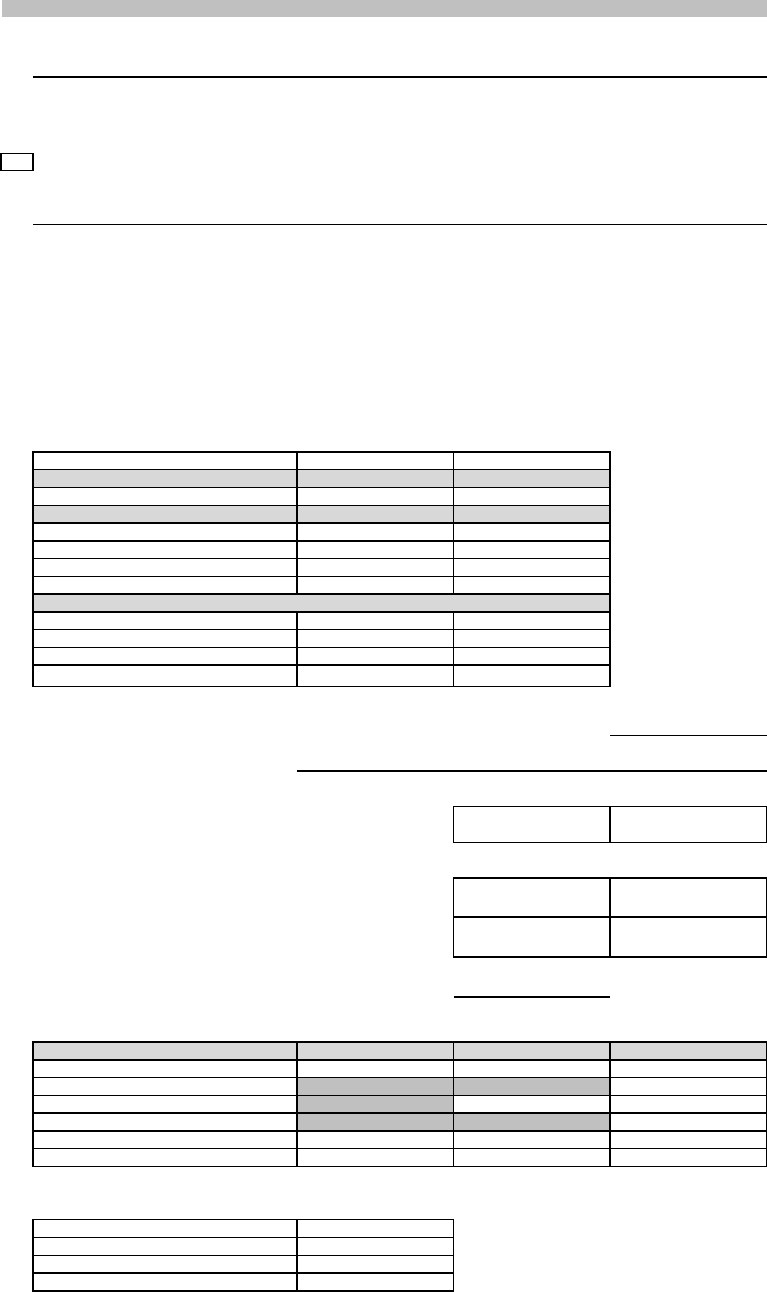
Common Data Set 2022-2023
G0
Please provide the URL of your institution’s net price calculator:
https://npc.collegeboard.org/app/bc
G1
G1
First-Year Undergraduates
PRIVATE INSTITUTIONS
Tuition:
$66,410 $66,410
PUBLIC INSTITUTIONS
Tuition: In-district
Tuition: In-state (out-of-district):
Tuition: Out-of-state:
Tuition: Non-resident
FOR ALL INSTITUTIONS
Required Fees
$1,270 $1,270
Room and Board (on-campus):
$18,475 $18,475
Room Only (on-campus):
$10,470 $10,470
Board Only (on-campus meal plan):
$8,005 $8,005
Other:
Minimum Maximum
G2
12 15
Yes No
G3
X
G4
X
G5
Residents
Commuters
Commuters
Books and supplies:
$1,250 $1,250 $1,250
Room only:
$9,324
Board only:
$2,658 $5,317
Room and board total*
Transportation:
$300 $300 $300
Other expenses:
$1,900 $2,200 $1,900
G6
PRIVATE INSTITUTIONS:
PUBLIC INSTITUTIONS:
In-district:
In-state (out-of-district):
G. ANNUAL EXPENSES
Provide 2023-2024 academic year costs of attendance for the following categories that are applicable
to your institution.
Check here if your institution's 2023-2024 academic year costs of attendance are not available at this time
and provide an approximate date (i.e., month/day) when your institution's final 2023-2024 academic year
costs of attendance will be available:
Undergraduate full-time tuition, required fees, room and board
List the typical tuition, required fees, and room and board for a full-time undergraduate student for the FULL
2023-2024 academic year. (30 semester hours or 45 quarter hours for institutions that derive annual tuition
by multiplying credit hour cost by number of credits).
• A full academic year refers to the period of time generally extending from September to June; usually
equated to two semesters, two trimesters, three quarters, or the period covered by a four-one-four plan.
• Room and board is defined as double occupancy and 19 meals per week or the maximum meal plan.
• Required fees include only charges that all full-time students must pay that are not included in tuition
(e.g., registration, health, or activity fees.)
• Do not include optional fees (e.g., parking, laboratory use).
Comprehensive tuition and room and board fee (if your college cannot provide
separate tuition and room and board fees):
Provide the estimated expenses for a typical full-time undergraduate student:
* If your college cannot provide separate room and board figures for commuters not living at home
Undergraduate per-credit-hour charges (tuition only):
Number of credits per term a student can take for the stated
full-time tuition.
Do tuition and fees vary by year of study (e.g., sophomore,
junior, senior)?
Do tuition and fees vary by undergraduate instructional
program?
If yes, what percentage of full-time undergraduates pay more
than the tuition and fees reported in G1?
CDS-G Page 24

Common Data Set 2022-2023
Out-of-state:
NONRESIDENTS:
CDS-G Page 25

Common Data Set 2022-2023
1. Non-need institutional grants
2. Non-need tuition waivers
3. Non-need athletic awards
4. Non-need federal grants
5. Non-need state grants
H1
2022-2023
2021-2022
Final as of
8/6/23
X
H. FINANCIAL AID
Please refer to the following financial aid definitions when completing Section H.
Awarded aid: The dollar amounts offered to financial aid applicants.
Financial aid applicant: Any applicant who submits any one of the institutionally required financial aid
applications/forms, such as the FAFSA.
Indebtedness: Aggregate dollar amount borrowed through any loan program (federal, state, subsidized,
unsubsidized, private, etc.; excluding parent loans) while the student was enrolled at an institution.
Student loans co-signed by a parent are assumed to be the responsibility of the student and should be
i ldd
Institutional scholarships and grants: Endowed scholarships, annual gifts and tuition funded grants
for which the institution determines the recipient.
Financial need: As determined by your institution using the federal methodology and/or your institution's
own standards.
Need-based aid: College-funded or college-administered award from institutional, state, federal, or other
sources for which a student must have financial need to qualify. This includes both institutional and non-
institutional student aid (grants, jobs, and loans).
Need-based scholarship or grant aid: Scholarships and grants from institutional, state, federal, or
other sources for which a student must have financial need to qualify.
Need-based self-help aid: Loans and jobs from institutional, state, federal, or other sources for which a
student must demonstrate financial need to qualify.
Non-need-based scholarship or grant aid: Scholarships and grants, gifts, or merit-based aid from
institutional, state, federal, or other sources (including unrestricted funds or gifts and endowment
income) awarded solely on the basis of academic achievement, merit, or any other non-need-based
reason. When reporting questions H1 and H2, non-need-based aid that is used to meet need should be
counted as need-based aid.
Note: Suggested order of precedence for counting non-need money as need-based:
6. Non-need outside grants
7. Non-need student loans
8. Non-need parent loans
9. Non-need work
Non-need-based self-help aid: Loans and jobs from institutional, state, or other sources for which a
student need not demonstrate financial need to qualify.
Private student loans: A nonfederal loan made by a lender such as a bank, credit union or private
lender used to pay for up to the annual cost of education, less any financial aid received.
External scholarships and grants: Scholarships and grants received from outside (private) sources
that students bring with them (e.g., Kiwanis, National Merit scholarships). The institution may process
paperwork to receive the dollars, but it has no role in determining the recipient or the dollar amount
Work study and employment: Federal and state work study aid, and any employment packaged by
your institution in financial aid awards.
DO NOT INCLUDE ANY AID RELATED TO THE CARES ACT OR UNIQUE THE COVID-19
Aid Awarded to Enrolled Undergraduates
Enter total dollar amounts awarded to enrolled full-time and less than full-time degree-seeking
undergraduates (using the same cohort reported in CDS Question B1, “total degree-seeking”
undergraduates) in the following categories.
• If the data being reported are final figures for the 2021-2022 academic year (see the next item
below),
• Include aid awarded to international students (i.e., those not qualifying for federal aid).
• Aid that is non-need-based but that was used to meet need should be reported in the need-based
aid
• For a suggested order of precedence in assigning categories of aid to cover need, see the entry for
“non-
• Do NOT include any aid related to the CARES Act or unique to the COVID-19 pandemic.
Indicate the academic year for which data are reported for items H1,
H2, H2A, and H6 below:
Which needs-analysis methodology does your institution use in awarding institutional aid? (Formerly H3)
Federal methodology (FM)
Institutional methodology (IM)
Both FM and IM
CDS-H Page 26
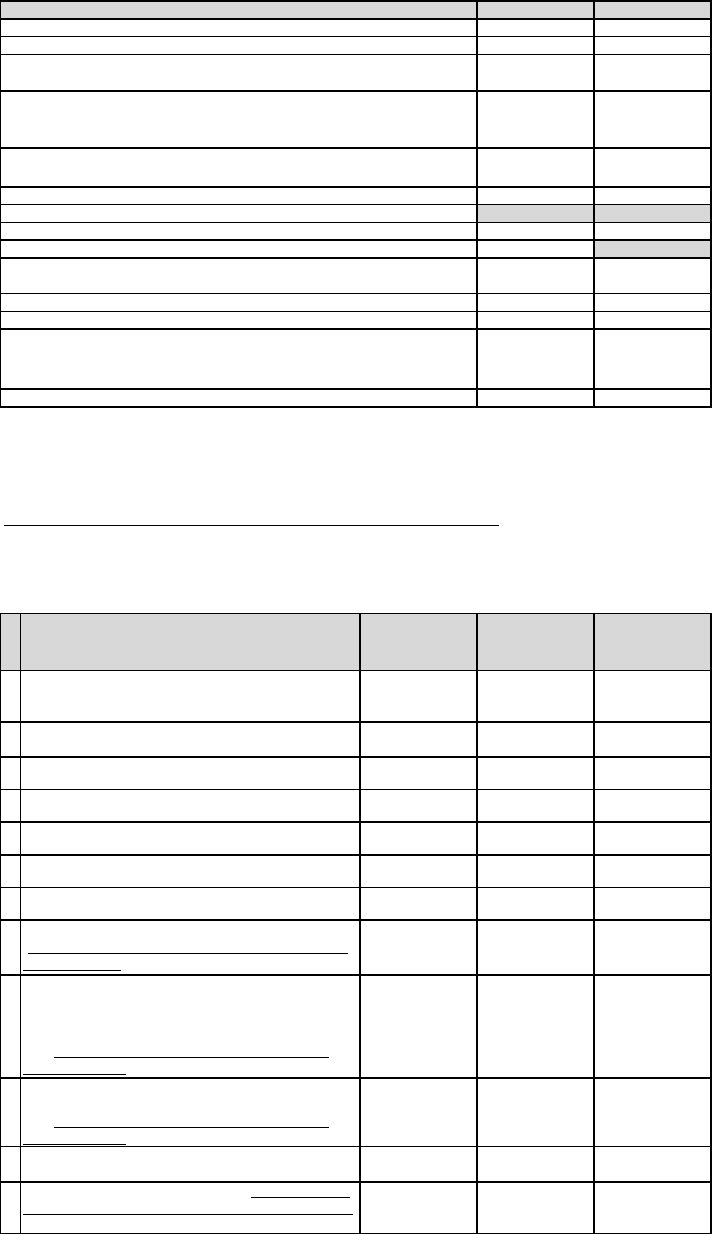
Common Data Set 2022-2023
Need-based
Non-need-
Scholarships/Grants
$9,251,244 $2,715,626
$1,500,850
$149,732,791 $6,119,901
$3,202,536 $2,970,612
$163,687,421 $11,806,139
Self-Help
$11,908,670 $3,139,204
$8,548,970
$20,457,640 $3,139,204
$41,095,380
$2,479,489 $9,347,158
$3,752,887 $17,928,428
H2
Full-time
First-time
First-year
Full-time
Undergrad
(Incl. Fresh)
Less Than
Full-time
Undergrad
A
Number of degree-seeking undergraduate students
(CDS Item B1 if reporting on Fall 2022 cohort)
2335 9484
B
Number of students in line a who applied for need-
based financial aid
1205 4230
C
Number of students in line b who were determined to
have financial need
983 3706
D
Number of students in line c who were awarded any
financial aid
983 3706
E
Number of students in line d who were awarded any
need-based scholarship or grant aid
856 3293
F
Number of students in line d who were awarded any
need-based self-help aid
875 3307
G
Number of students in line d who were awarded any
non-need-based scholarship or grant aid
28 93
H
Number of students in line d whose need was fully met
(exclude PLUS loans, unsubsidized loans, and private
alternative loans)
983 3706
I
On average, the percentage of need that was met of
students who were awarded any need-based aid.
Exclude any aid that was awarded in excess of need as
well as any resources that were awarded to replace
EFC (PLUS loans, unsubsidized loans, and private
alternative loans)
100.0% 100.0%
J
The average financial aid package of those in line d.
Exclude any resources that were awarded to replace
EFC (PLUS loans, unsubsidized loans, and private
alternative loans)
$ 51,623 $ 52,620
K
Average need-based scholarship and grant award of
those in line e
$ 49,872 $ 49,758
L
Average need-based self-help award (excluding PLUS
loans, unsubsidized loans, and private alternative loans
)
of those in line f
$ 4,888 $ 6,170
Federal
State all states, not only the state in which your institution is located
Institutional: Endowed scholarships, annual gifts and tuition funded
grants, awarded by the college, excluding athletic aid and tuition
waivers (which are reported below).
Scholarships/grants from external sources (e.g. Kiwanis, National
Merit) not awarded by the college
Total Scholarships/Grants
Student loans from all sources (excluding parent loans)
Federal Work-Study
State and other (e.g., institutional) work-study/employment (Note:
Excludes Federal Work-Study captured above.)
Total Self-Help
Parent Loans
Tuition Waivers
Note: Reporting is optional. Report tuition waivers in this row if you
choose to report them. Do not report tuition waivers elsewhere.
Athletic Awards
Number of Enrolled Students Awarded Aid: List the number of degree-seeking full-time and less-than-
full-time undergraduates who applied for and were awarded financial aid from any source.
• Aid that is non-need-based but that was used to meet need should be counted as need-
based aid.
• Numbers should reflect the cohort awarded the dollars reported in H1.
• In the chart below, students may be counted in more than one row, and full-time, first-time,
first-year students should also be counted as full-time undergraduates.
• Do NOT include any aid related to the CARES Act or unique to the COVID-19 pandemic.
CDS-H Page 27
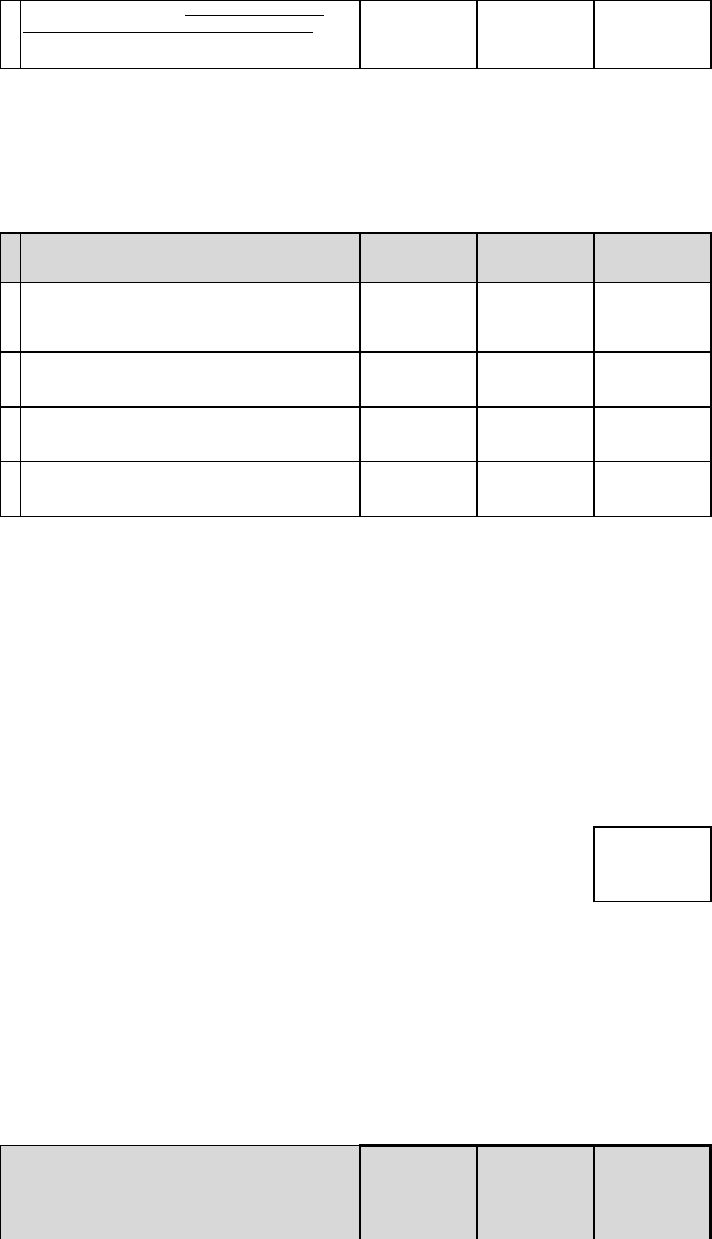
Common Data Set 2022-2023
M
Average need-based loan (excluding PLUS loans,
unsubsidized loans, and private alternative loans) of
those in line f who were awarded a need-based loan
$ 3,336 $ 4,492
H2A
Full-time
First-time
First-year
Full-time
Undergrad
(Incl. Fresh.)
Less Than
Full-time
Undergrad
N
Number of students in line a who had no financial need
and who were awarded institutional non-need-based
scholarship or grant aid (exclude those who were
awarded athletic awards and tuition benefits)
24 231
O
Average dollar amount of institutional non-need-based
scholarship and grant aid awarded to students in line n
$ 26,012 $ 22,464
P
Number of students in line a who were awarded an
institutional non-need-based athletic scholarship or
grant
69 276
Q
Average dollar amount of institutional non-need-based
athletic scholarships and grants awarded to students in
line p
$ 62,067 $ 62,185
Include:
H4
2158
• Students who transferred in.
Number of Enrolled Students Awarded Non-need-based Scholarships and Grants: List the number
of degree-seeking full-time and less-than-full-time undergraduates who had no financial need and who
were awarded institutional non-need-based scholarship or grant aid.
• Numbers should reflect the cohort awarded the dollars reported in H1.
• In the chart below, students may be counted in more than one row, and full-time, first-time, first-year
students should also be
• Do NOT include any aid related to the CARES Act or unique to the COVID-19 pandemic.
Note: These are the graduates and loan types to include and exclude in order to fill out CDS H4
and H5.
• 2022 undergraduate class: all students who started at your institution as first-time students and
received a bachelor's degree between July 1, 2021 and June 30, 2022.
• Only loans made to students who borrowed while enrolled at your institution.
• Co-signed loans.
Exclude
• Money borrowed at other institutions.
• Parent loans
• Students who did not graduate or who graduated with another degree or certificate (but no
bachelor’s degree).
• Any aid related to the CARE Act or unique the COVID-19 pandemic.
Provide the number of students in the 2022 undergraduate class who started at
your institution as first-time students and received a bachelor's degree between
July 1, 2021 and June 30, 2022. Exclude students who transferred into your
institution.
H5. Number and percent of students in class (defined in H4 above) borrowing from federal, non-federal,
and any loan sources, and the average (or mean) amount borrowed.
• The “Average per-undergraduate-borrower cumulative principal borrowed,” is designed to provide better
information about student borrowing from federal and nonfederal (institutional, state, commercial) sources.
• The numbers, percentages, and averages for each row should be based only on the loan source specified
for
the particular row. For example, the federal loans average (row b) should only be the cumulative average
of
Number in the
class (defined
in H4 above)
who borrowed
Percent of the
class (defined
above) who
borrowed from
Average per-
undergraduate-
borrower
cumulative
principal
CDS-H Page 28
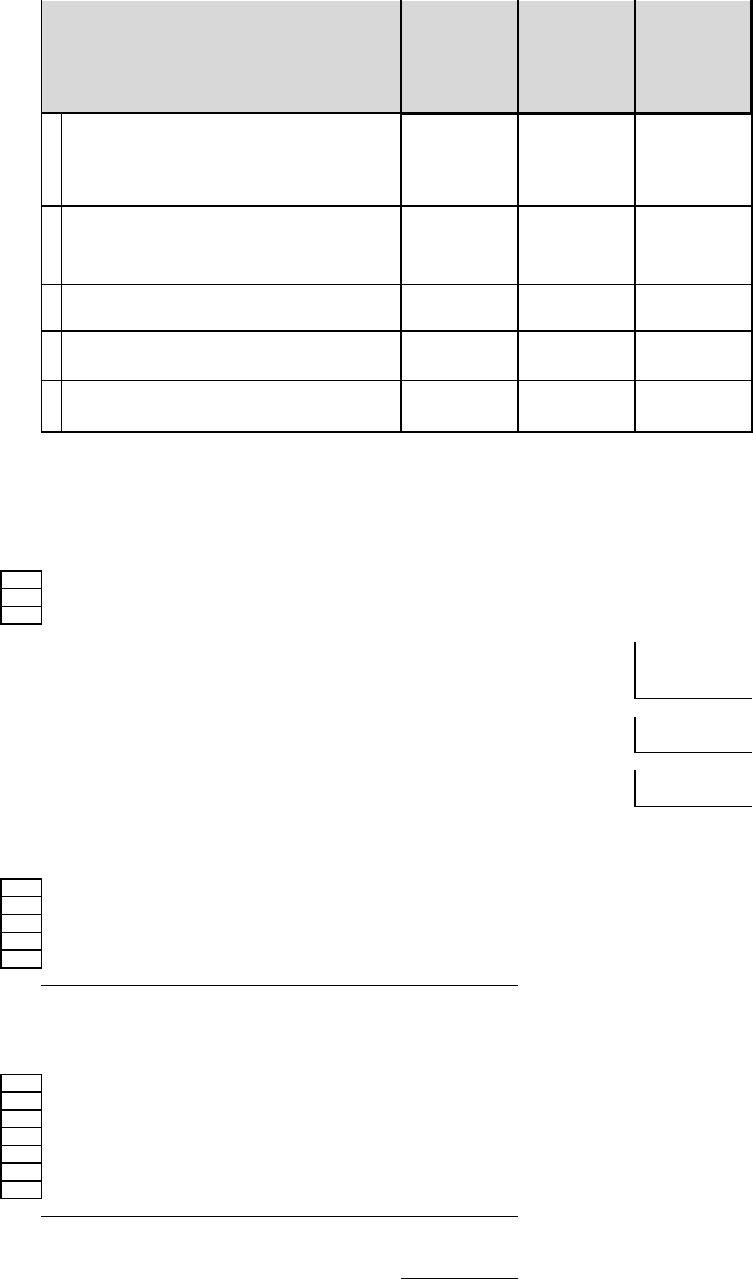
Common Data Set 2022-2023
A
Any loan program: Federal Perkins, Federal Stafford
Subsidized and Unsubsidized, institutional, state,
private loans that your institution is aware of, etc.
Include both Federal Direct Student Loans and Federal
Family Education Loans.
978 45.32% $24,579
B
Federal loan programs: Federal Perkins, Federal
Stafford Subsidized and Unsubsidized. Include both
Federal Direct Student Loans and Federal Family
Education Loans.
941 43.61% $15,949
C Institutional loan programs. 1 0.05% $45,040
D State loan programs. 12 0.56% $7,838
E Private student loans made by a bank or lender. 271 12.56% $32,808
H6
X
10
$62,363
$623,632
H7
Process for First-Year Students
H8
X
X
X
X
H9
Priority date for filing required financial aid forms: 1-Feb
International Student’s Certification of Finances
Other (specify):
Check off all financial aid forms domestic first-year financial aid applicants must submit:
FAFSA
who borrowed
from the types
of loans
specified in the
first column
the types of
loans specified
in the first
column
(nearest 1%)
borrowed from
the types of
loans specified
in the first
column
(nearest $1)
Source/Type of Loan
Aid to Undergraduate Degree-seeking Nonresidents
• Report numbers and dollar amounts for the same academic year checked in item H1
Indicate your institution’s policy regarding institutional scholarship and grant aid for undergraduate
degree-seeking nonresidents:
Institutional need-based scholarship or grant aid is available
Institutional non-need-based scholarship or grant aid is available
Institutional scholarship or grant aid is not available
If institutional financial aid is available for undergraduate degree-seeking nonresidents,
provide the number of undergraduate degree-seeking nonresidents who were awarded
need-based or non-need-based aid:
Average dollar amount of institutional financial aid awarded to undergraduate degree-
seeking nonresidents:
Total dollar amount of institutional financial aid awarded to undergraduate degree-
seeking nonresidents:
Check off all financial aid forms nonresident first-year financial aid applicants must submit:
Institution’s own financial aid form
CSS/Financial Aid PROFILE
International Student’s Financial Aid Application
Institution's own financial aid form
CSS/Financial Aid PROFILE
State aid form
Noncustodial PROFILE
Business/Farm Supplement
Other (specify):
Indicate filing dates for first-year students:
CDS-H Page 29
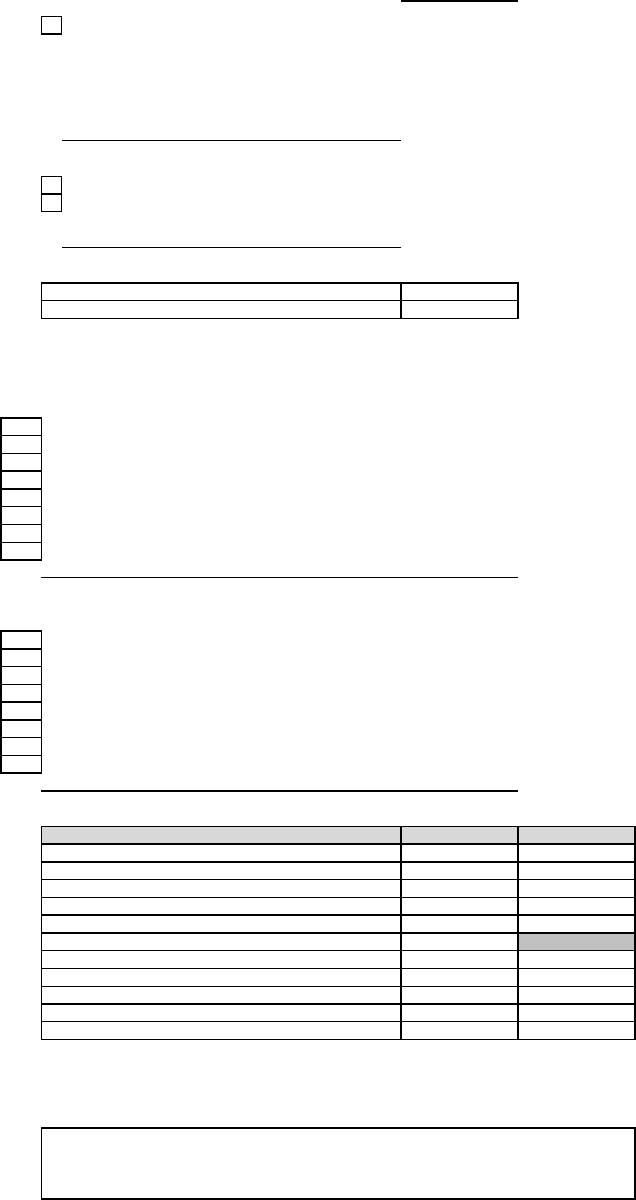
Common Data Set 2022-2023
Deadline for filing required financial aid forms:
H10
a) Students notified on or about (date):
1-Apr
b) Students notified on a rolling basis:
Yes
No
If yes, starting date:
H11
5/1
Types of Aid Available
Please check off all types of aid available to undergraduates at your institution:
H12
X
X
X
X
X
X
H13
X
X
X
X
X
H14
Non-Need Based Need-Based
X X
X
X
X
X
H15
No deadline for filing required forms (applications
processed on a rolling basis)
Direct Subsidized Stafford Loans
Direct Unsubsidized Stafford Loans
Direct PLUS Loans
Federal Perkins Loans
Federal Nursing Loans
State Loans
College/university loans from institutional funds
Other (specify):
Need Based Scholarships and Grants
Federal Pell
SEOG
State scholarships/grants
Private scholarships
College/university scholarship or grant aid from institutional funds
United Negro College Fund
Federal Nursing Scholarship
Other (specify):
Check off criteria used in awarding institutional aid. Check all that apply.
Leadership
Minority status
Music/drama
Religious affiliation
State/district residency
If your institution has recently implemented any major financial aid policy, program, or
initiative to make your institution more affordable to incoming students such as
replacing loans with grants, or waiving costs for families below a certain income level
please provide details below:
Are these policies related to the COVID-19 pandemic?
Academics
Alumni affiliation
Art
Athletics
Job skills
ROTC
Indicate reply dates:
Students must reply by (date):
or within _______ weeks of notification.
Loans
Indicate notification dates for first-year students (answer a or b):
CDS-H Page 30

Common Data Set 2022-2023
Yes
No
CDS-H Page 31
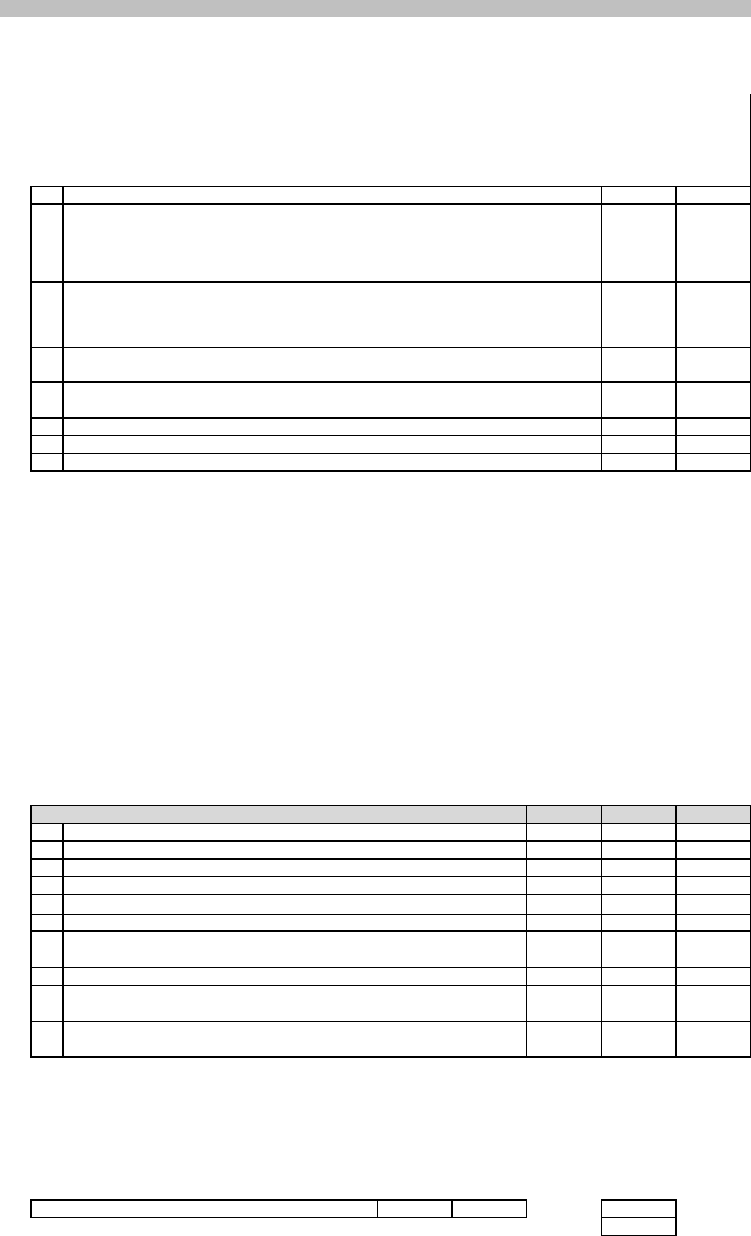
Common Data Set 2022-2023
I-1.
Full-time Part-time
A
Exclude
Include only if
they teach one
or more non-
clinical credit
courses
B
Exclude
Include if they
teach one or
more non-
clinical credit
courses
C
Exclude Include
D
Exclude Exclude
E
Include Exclude
F
Exclude Exclude
G
Exclude Include
I-1. Full-Time Part-Time Total
A 887 613 1500
B 199 118 317
C 384 368 752
D 503 245 748
E 14 10 24
F 856 273 1129
G 30 244 274
H 1 65 66
I 0 31 31
J 120 211 331
I-2.
11
to 1 (based on
9484
students
and
901
faculty).
I-3.
I. INSTRUCTIONAL FACULTY AND CLASS SIZE
Please report the number of instructional faculty members in each category for Fall 2022. Include
faculty who are on your institution’s payroll on the census date your institution uses for
IPEDS/AAUP.
The following definition of full-time instructional faculty is used by the American Association of University Professors
(AAUP) in its annual Faculty Compensation Survey (the part time definitions are not used by AAUP). Instructional
Faculty is defined as those members of the instructional-research staff whose major regular assignment is instruction,
including those with released time for research. Use the chart below to determine inclusions and exclusions:
Instructional faculty in preclinical and clinical medicine, faculty who are not paid (e.g.,
those who donate their services or are in the military), or research-only faculty, post-
doctoral fellows, or pre-doctoral fellows
Administrative officers with titles such as dean of students, librarian, registrar, coach, and
the like, even though they may devote part of their time to classroom instruction and may
have faculty status
Other administrators/staff who teach one or more non-clinical credit courses even though
they do not have faculty status
Undergraduate or graduate students who assist in the instruction of courses, but have
titles such as teaching assistant, teaching fellow, and the like
Faculty on sabbatical or leave with pay
Faculty on leave without pay
Replacement faculty for faculty on sabbatical leave or leave with pay
Full-time instructional faculty: faculty employed on a full-time basis for instruction (including those with released time
for research)
Part-time instructional faculty: Adjuncts and other instructors being paid solely for part-time classroom instruction.
Also includes full-time faculty teaching less than two semesters, three quarters, two trimesters, or two four-month
sessions. Employees who are not considered full-time instruction faculty but who teach one or more non-clinical credit
courses may be counted as part-time faculty.
Minority faculty: includes faculty who designate themselves as Black, non-Hispanic; American Indian or Alaska
Native; Asian, Native Hawaiian or other Pacific Islander, or Hispanic.
Doctorate: includes such degrees as Doctor of Philosophy, Doctor of Education, Doctor of Juridical Science, and
Doctor of Public Health in any field such as arts, sciences, education, engineering, business, and public administration.
Also includes terminal degrees formerly designated as “first professional,” including dentistry (DDS or DMD), medicine
(MD), optometry (OD), osteopathic medicine (DO), pharmacy (DPharm or BPharm), podiatric medicine (DPM),
veterinary medicine (DVM), chiropractic (DC or DCM), or law (JD).
Terminal master’s degree: a master’s degree that is considered the highest degree in a field: example, M. Arch (in
architecture) and MFA (master of fine arts in art or theater).
Total number of instructional faculty
Total number who are members of minority groups
Total number who are women
Total number who are men
Total number who are nonresidents (international)
Total number with doctorate, or other terminal degree
Total number whose highest degree is a master’s but not a terminal
master’s
Total number whose highest degree is a bachelor’s
Total number whose highest degree is unknown or other (Note:
Items f, g, h, and i must sum up to item a.)
Total number in stand-alone graduate/professional programs in
which faculty teach virtually only graduate-level students
Student to Faculty Ratio
Report the Fall 2022 ratio of full-time equivalent students (full-time plus 1/3 part time) to full-time
equivalent instructional faculty (full time plus 1/3 part time). In the ratio calculations, exclude both faculty
and students in stand-alone graduate or professional programs such as medicine, law, veterinary,
dentistry, social work, business, or public health in which faculty teach virtually only graduate level
• Do not count undergraduate or graduate student teaching assistants as faculty.
Fall 2022 Student to Faculty ratio
Undergraduate Class Size
CDS-I Page 32

Common Data Set 2022-2023
2-9 10-19 20-29 30-39 40-49 50-99 100+ Total
206 689 338 328 116 66 40 1783
2-9 10-19 20-29 30-39 40-49 50-99 100+ Total
62 296 210 33 4 17 2 624
Class size includes Woods College of Advancing Studies students.
Using the above definitions, please report for each of the following class-size intervals the number of
class sections and class subsections offered in Fall 2022. For example, a lecture class with 800 students
who met at another time in 40 separate labs with 20 students should be counted once in the “100+”
column in the class section column and 40 times under the “20-29” column of the class subsections table.
Number of Class Sections with Undergraduates Enrolled
CLASS SUB-
SECTIONS
In the table below, please use the following definitions to report information about the size of classes and
class sections offered in the Fall 2022 term.
• Please include classes that have been moved online in response to the COVID-19 pandemic.
Class Sections: A class section is an organized course offered for credit, identified by discipline and
number, meeting at a stated time or times in a classroom or similar setting, and not a subsection such as
a laboratory or discussion session. Undergraduate class sections are defined as any sections in which at
least one degree-seeking undergraduate student is enrolled for credit. Exclude distance learning classes
and noncredit classes and individual instruction such as dissertation or thesis research, music instruction,
or one-to-one readings. Exclude students in independent study, co-operative programs, internships,
foreign language taped tutor sessions, practicums, and all students in one-on-one classes. Each class
section should be counted only once and should not be duplicated because of course catalog cross-
listings
Class Subsections: A class subsection includes any subsection of a course, such as laboratory,
recitation, and discussion subsections that are supplementary in nature and are scheduled to meet
separately from the lecture portion of the course. Undergraduate subsections are defined as any
subsections of courses in which degree-seeking undergraduate students enrolled for credit. As above,
exclude noncredit classes and individual instruction such as dissertation or thesis research, music
instruction, or one-to-one readings. Each class subsection should be counted only once and should not be
duplicated because of cross-listings.
Undergraduate Class Size (provide numbers)
CLASS
SECTIONS
CDS-I Page 33
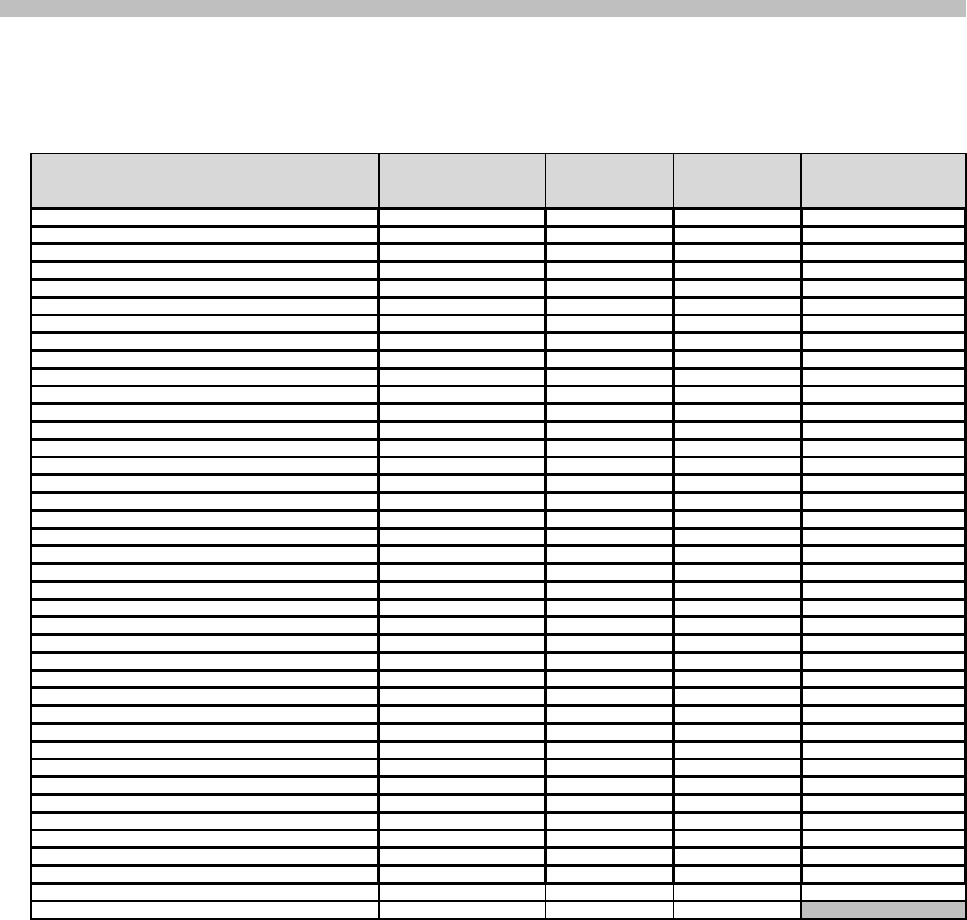
Common Data Set 2022-2023
J1 Degrees conferred between July 1, 2022 and June 30, 2023
Category Diploma/Certificates Associate Bachelor’s
CIP 2020 Categories
to Include
Agriculture 01
Natural resources and conservation 1.10% 03
Architecture 04
Area, ethnic, and gender studies 0.35% 05
Communication/journalism 6.16% 09
Communication technologies 10
Computer and information sciences 6.54% 11
Personal and culinary services 12
Education 1.19% 13
Engineering 14
Engineering technologies
15
Foreign languages, literatures, and linguistics 1.06%
16
Family and consumer sciences 19
Law/legal studies 22
English 2.93% 23
Liberal arts/general studies 24
Library science 25
Biological/life sciences 10.25% 26
Mathematics and statistics 2.74% 27
Military science and military technologies 28 & 29
Interdisciplinary studies 2.90%
30
Parks and recreation 31
Philosophy and religious studies 3.13% 38
Theology and religious vocations 0.68% 39
Physical sciences 1.00% 40
Science technologies 41
Psychology 8.19%
42
Homeland Security, law enforcement, firefighting,
0.13% 43
Public administration and social services 44
Social sciences 18.41% 45
Construction trades 46
Mechanic and repair technologies 47
Precision production 48
Transportation and materials moving 49
Visual and performing arts 1.52% 50
Health professions and related programs 3.38% 51
Business/marketing 26.27% 52
History 2.06%
54
Other
TOTAL (should = 100%) 0.00% 0.00% 100.0%
Bachelor's degrees include Woods College of Advancing Studies.
J. Disciplinary areas of DEGREES CONFERRED
For each of the following discipline areas, provide the percentage of diplomas/certificates, associate, and bachelor’s degrees awarded. To
determine the percentage, use majors, not headcount (e.g., students with one degree but a double major will be represented twice).
Calculate the percentage from your institution’s IPEDS Completions by using the sum of 1st and 2nd majors for each CIP code as the
numerator and the sum of the Grand Total by 1st Majors and the Grand Total by 2nd major as the denominator. If you prefer, you can
compute the percentages using 1st majors only.
CDS-J Page 34
